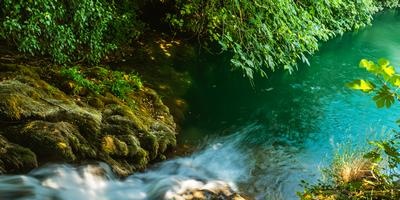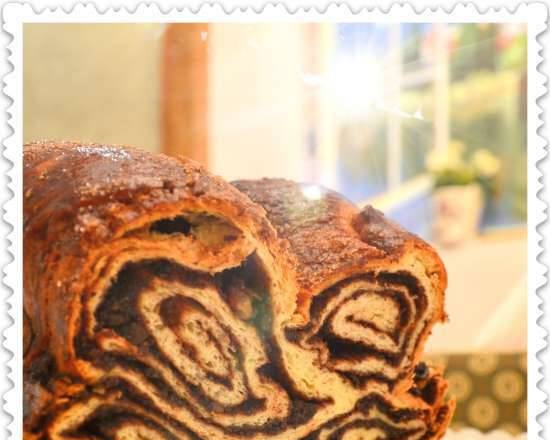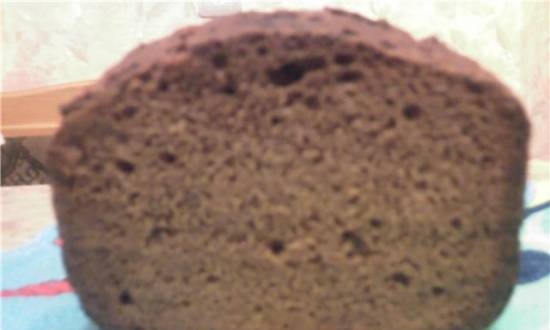|
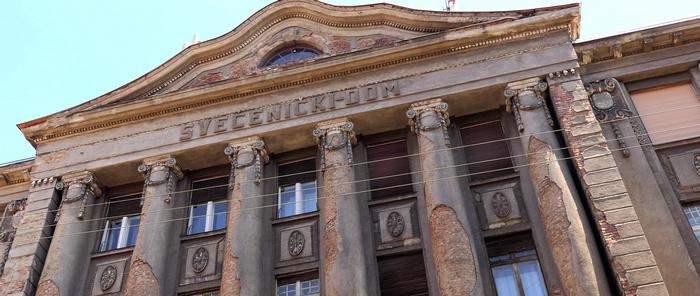 In ancient times, one of the Croatian bans (ban - leader, ruler, sometimes the king's deputy) led his army along the edge where the city now stands. There was a hot, debilitating drought. The warriors suffered from an excruciating thirst. At a halt, the ban thrust his sword into the ground, and a fountain of cold water suddenly gushed out of it. Ban called his army to the source of salvation, exclaiming: "Rake!" And the warriors - some with a helmet, some with their palms - began to "rake in" and drink life-giving moisture. From there, allegedly, the name of the city is Zagreb. So the legend says. However, according to another Croatian version, "zagreb" in the old Croatian language meant a mound (that which was "raked up"), a fortification, a hill fort. It is possible that the name of the city came from the first settlement erected here ... In ancient times, one of the Croatian bans (ban - leader, ruler, sometimes the king's deputy) led his army along the edge where the city now stands. There was a hot, debilitating drought. The warriors suffered from an excruciating thirst. At a halt, the ban thrust his sword into the ground, and a fountain of cold water suddenly gushed out of it. Ban called his army to the source of salvation, exclaiming: "Rake!" And the warriors - some with a helmet, some with their palms - began to "rake in" and drink life-giving moisture. From there, allegedly, the name of the city is Zagreb. So the legend says. However, according to another Croatian version, "zagreb" in the old Croatian language meant a mound (that which was "raked up"), a fortification, a hill fort. It is possible that the name of the city came from the first settlement erected here ...
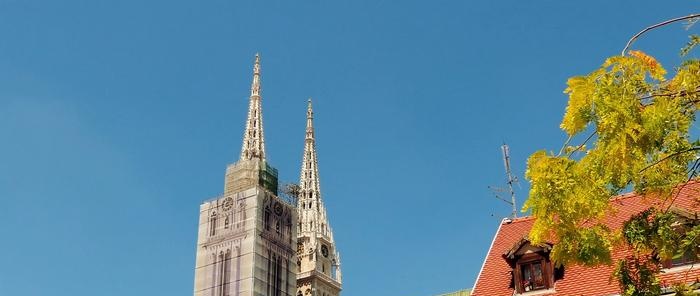 The capital of Croatia, the millennial “old Zagreb”, as residents love their city, is spread over a vast area in our time, descending from the foot of the Medvednitsa mountain into the vast valley of the Sava River and in recent years developing its right-bank part as well. The capital of Croatia, the millennial “old Zagreb”, as residents love their city, is spread over a vast area in our time, descending from the foot of the Medvednitsa mountain into the vast valley of the Sava River and in recent years developing its right-bank part as well.
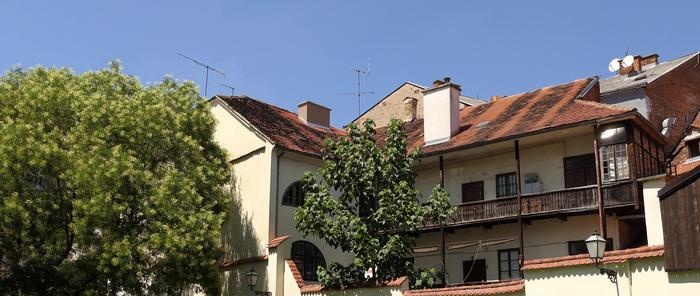 Big cities always appear in geographically favorable places for humans. So it is here: the fertile valley of the middle reaches of the still transparent Sava, which emerges from the mountain valleys near Zagreb into the wide Pannonian plain, the southern gentle slopes of the Medvednica mountain, which protects the valley from northern winds and is covered with deciduous forests, numerous rivers running down from these slopes - all favored human settlement. Big cities always appear in geographically favorable places for humans. So it is here: the fertile valley of the middle reaches of the still transparent Sava, which emerges from the mountain valleys near Zagreb into the wide Pannonian plain, the southern gentle slopes of the Medvednica mountain, which protects the valley from northern winds and is covered with deciduous forests, numerous rivers running down from these slopes - all favored human settlement.
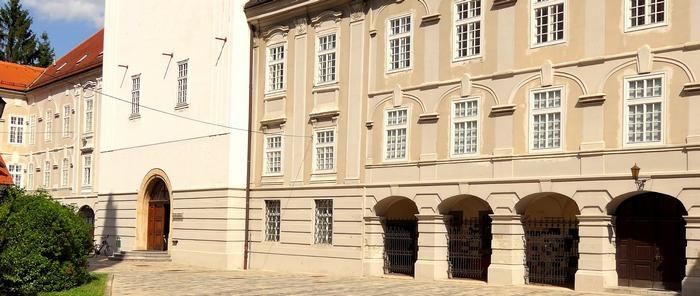 And the climate here is mild, temperate - the average annual temperature is 11.6 ° (for comparison: in Moscow, only about 3.6 °). Summers are warm, without droughts (average July temperature - 22.1 °). And the climate here is mild, temperate - the average annual temperature is 11.6 ° (for comparison: in Moscow, only about 3.6 °). Summers are warm, without droughts (average July temperature - 22.1 °).
 The softening influence of the nearby Mediterranean is expressed in a relatively warm winter: the average January temperature is never below zero (about 0.7 °). The softening influence of the nearby Mediterranean is expressed in a relatively warm winter: the average January temperature is never below zero (about 0.7 °).
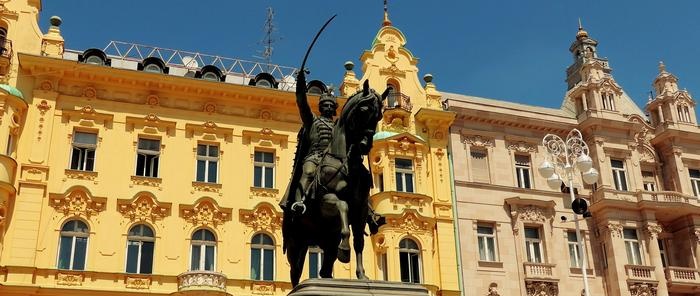 The rainiest time is late spring, early summer and late autumn (in just a year, 865 millimeters of precipitation falls here, with a maximum in May, June and October). The rainiest time is late spring, early summer and late autumn (in just a year, 865 millimeters of precipitation falls here, with a maximum in May, June and October).
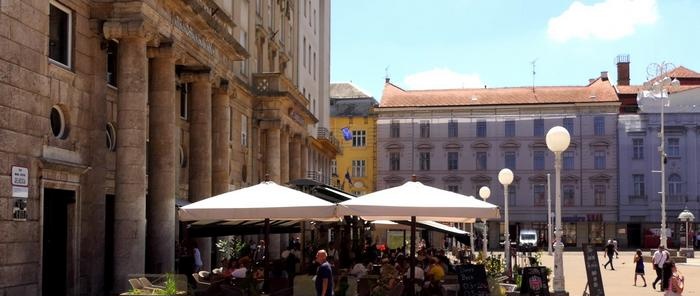 The vegetation is still influenced by the continental climate of Central Europe. The surrounding mountains are covered with still preserved oak and hornbeam forests (with rock oak) with an admixture of wild cherry, field maple, and linden. The vegetation is still influenced by the continental climate of Central Europe. The surrounding mountains are covered with still preserved oak and hornbeam forests (with rock oak) with an admixture of wild cherry, field maple, and linden.
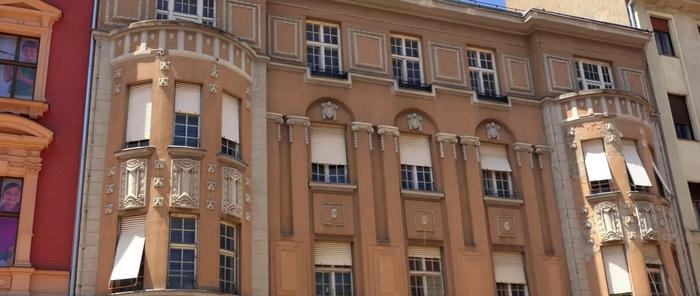 There are also areas of the forest with edible chestnuts. There are also areas of the forest with edible chestnuts.
In early spring (late February - March), even before the tree leaves bloom, motley carpets of brightly flowering ephemeroid plants appear (ephemeroids are perennial plants with a very short spring period of development, before the foliage of trees bloom) - white snowdrops, blue forest trees, pink crocuses, green flowers hellebores, lungwort, violets.
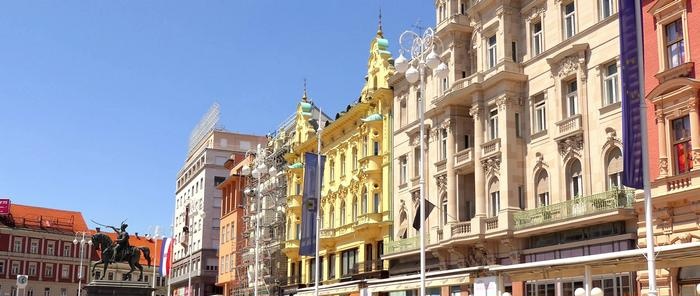 Among them, there are also more rare local species - haketiya, kandyk, or dog's tooth, epimedium mountain goat. Among them, there are also more rare local species - haketiya, kandyk, or dog's tooth, epimedium mountain goat.
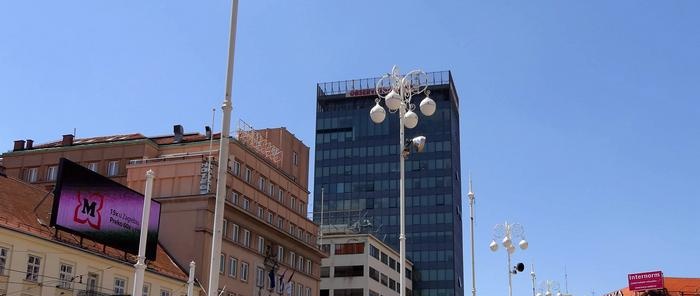 On the plain of Turopolye, adjacent to the floodplain of the Sava, once there were marsh low-lying oak forests (from the pedunculate oak), of which only individual forest "islands" remain. On the plain of Turopolye, adjacent to the floodplain of the Sava, once there were marsh low-lying oak forests (from the pedunculate oak), of which only individual forest "islands" remain.
 Ash and elm grow here with oak, and in the abundant underbrush - buckthorn, viburnum and gorse bushes blooming in golden bunches of yellow flowers. The Sava River on the plain changed its course many times. Ash and elm grow here with oak, and in the abundant underbrush - buckthorn, viburnum and gorse bushes blooming in golden bunches of yellow flowers. The Sava River on the plain changed its course many times.
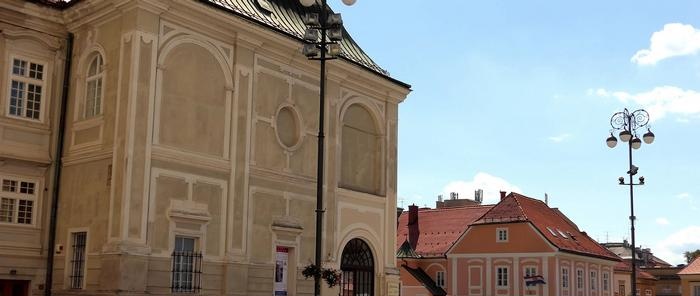 Because of its constant floods, the old city did not approach the river, but was built somewhat higher. Because of its constant floods, the old city did not approach the river, but was built somewhat higher.
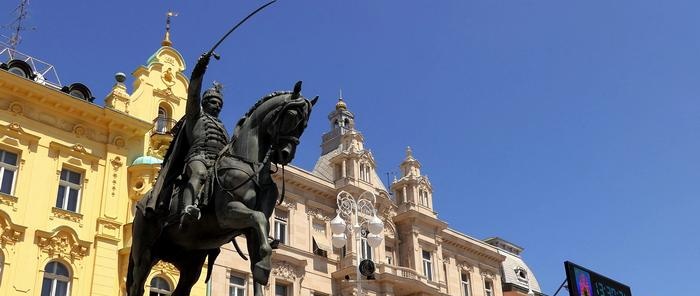 Only after the regulation of the river banks in recent years has Zagreb begun to expand on both sides of the Sava. But floodplain forests were favored by its floods. Only after the regulation of the river banks in recent years has Zagreb begun to expand on both sides of the Sava. But floodplain forests were favored by its floods.
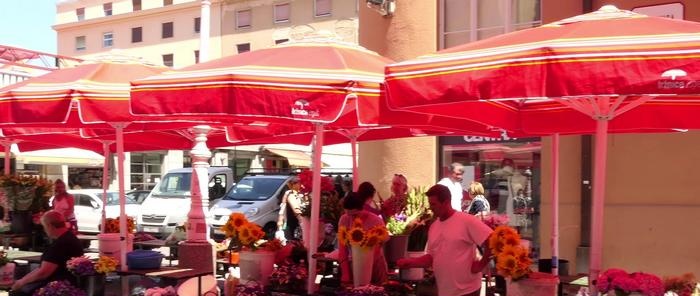 The fauna of the surrounding forests currently exists to a large extent with the support (replenishment and protection) of it by humans. The fauna of the surrounding forests currently exists to a large extent with the support (replenishment and protection) of it by humans.
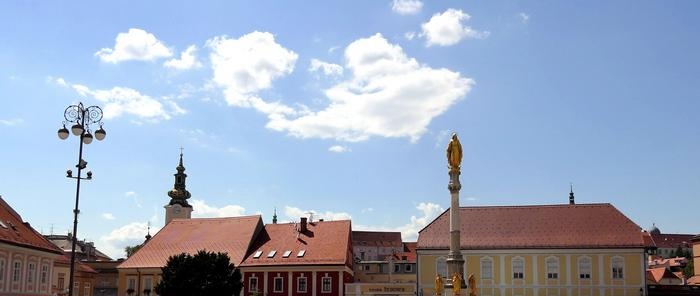 There are a lot of roe deer here, hares, pheasants. Wild boars have also survived here and there. As always, in deciduous deciduous forests, the abundance of songbirds, nesting in the dense crowns of trees and in bushes, pleases. There are a lot of roe deer here, hares, pheasants. Wild boars have also survived here and there. As always, in deciduous deciduous forests, the abundance of songbirds, nesting in the dense crowns of trees and in bushes, pleases.
 But the geographical names contain indications that larger animals were once found here. But the geographical names contain indications that larger animals were once found here.
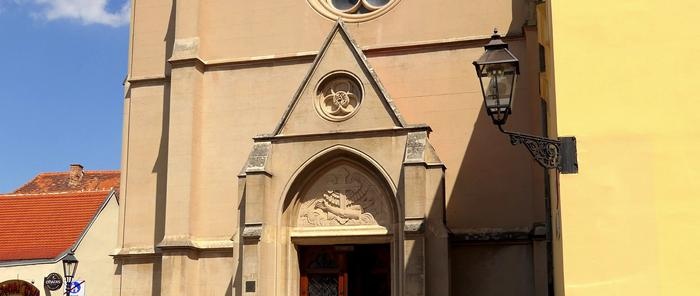 On the Turopolye plain, in oak forests, on lush floodplain meadows, wild bulls grazed - the turs that lived in our Russian plain and were exterminated in Central Europe only at the end of the Middle Ages. On the Turopolye plain, in oak forests, on lush floodplain meadows, wild bulls grazed - the turs that lived in our Russian plain and were exterminated in Central Europe only at the end of the Middle Ages.
 In the dense forests of Medvednitsa Mountain, which reaches an altitude of 1035 meters, there was no shortage of bears. All this, however, we can find confirmation in historical materials. In the dense forests of Medvednitsa Mountain, which reaches an altitude of 1035 meters, there was no shortage of bears. All this, however, we can find confirmation in historical materials.
 In the place where Zagreb is now located, settlements of the Celts and Illyrians existed even before our era. In the place where Zagreb is now located, settlements of the Celts and Illyrians existed even before our era.
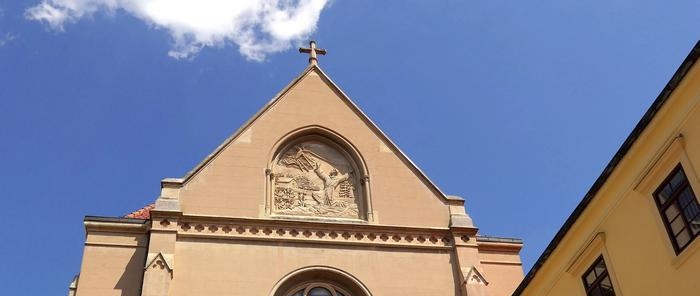 During Roman rule (from the 1st century BC) there was the city of Andautbnia, the remains of which were found on the territory of Zagreb. During Roman rule (from the 1st century BC) there was the city of Andautbnia, the remains of which were found on the territory of Zagreb.
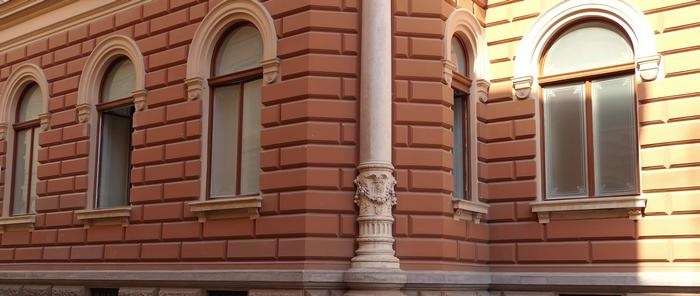 The great migrations and battles of peoples - Huns, Goths, Avars and Slavs - ended with the disappearance of Roman cities and the consolidation of Slavic tribes here. The great migrations and battles of peoples - Huns, Goths, Avars and Slavs - ended with the disappearance of Roman cities and the consolidation of Slavic tribes here.
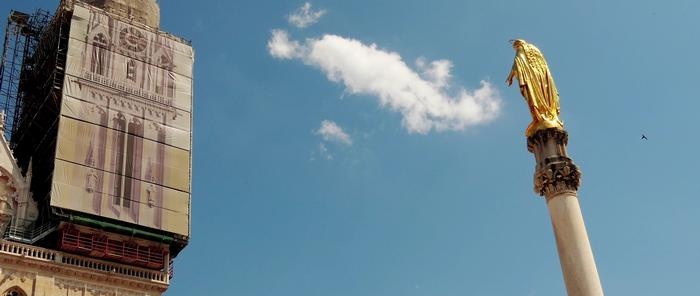 Their first settlements date back to the 8th century. At that time, the lands of the Croatian state stretched here. Their first settlements date back to the 8th century. At that time, the lands of the Croatian state stretched here.
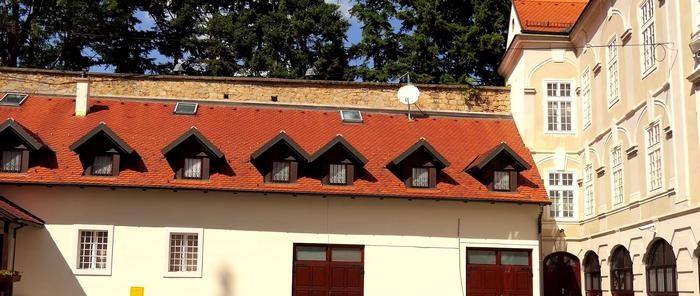 Prince Tomislav, who defended the idea of unity with the Serbian people, became the first king of Croatia in 925. Prince Tomislav, who defended the idea of unity with the Serbian people, became the first king of Croatia in 925.
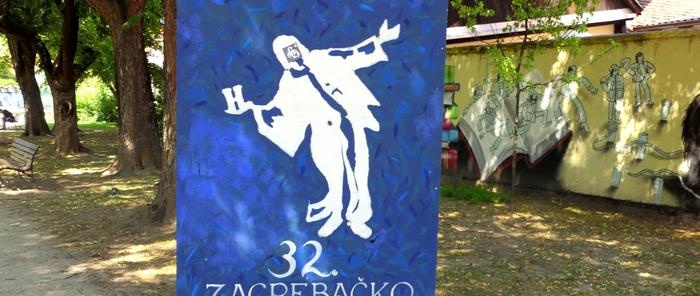 But already in 1097, with the death of Peter II, the dynasty of Croatian kings died out and Croatia entered into a “personal union” with the Kingdom of Hungary. The united state was ruled by the Arpadovich dynasty. But already in 1097, with the death of Peter II, the dynasty of Croatian kings died out and Croatia entered into a “personal union” with the Kingdom of Hungary. The united state was ruled by the Arpadovich dynasty.
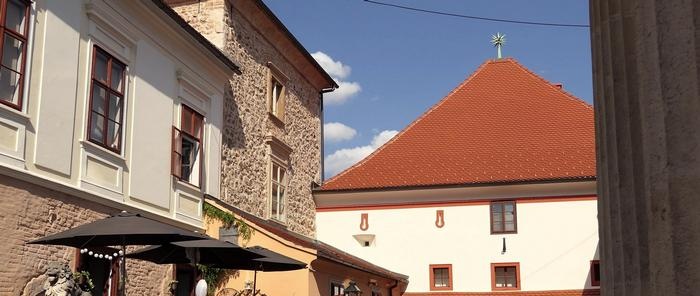 For the first time the name Zagreb was mentioned in historical documents in 1094, when the episcopal power was founded in it, and from this date its history begins. For the first time the name Zagreb was mentioned in historical documents in 1094, when the episcopal power was founded in it, and from this date its history begins.
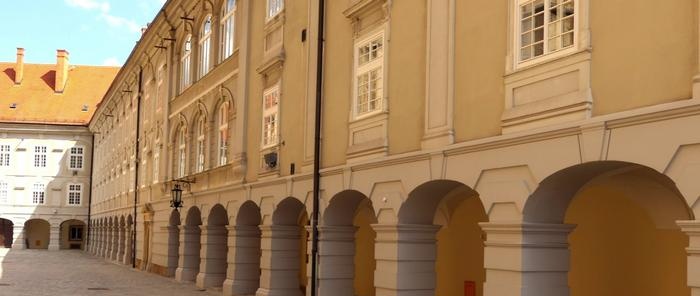 Already at the beginning of the Middle Ages, two "nuclei" of modern Zagreb existed on two neighboring hills, separated by the Medveschak stream, for a long time developing independently and even at war with each other. Already at the beginning of the Middle Ages, two "nuclei" of modern Zagreb existed on two neighboring hills, separated by the Medveschak stream, for a long time developing independently and even at war with each other.
 On the western hill was the fortified Hradec, the present Upper Town, and on the eastern one, Kaptol. The latter was the seat of the highest clergy of the city, while Hradec was mainly the mainstay of the secular power of kings. On the western hill was the fortified Hradec, the present Upper Town, and on the eastern one, Kaptol. The latter was the seat of the highest clergy of the city, while Hradec was mainly the mainstay of the secular power of kings.
 There was a cathedral and a large Franciscan monastery in Kaptole. There was a cathedral and a large Franciscan monastery in Kaptole.
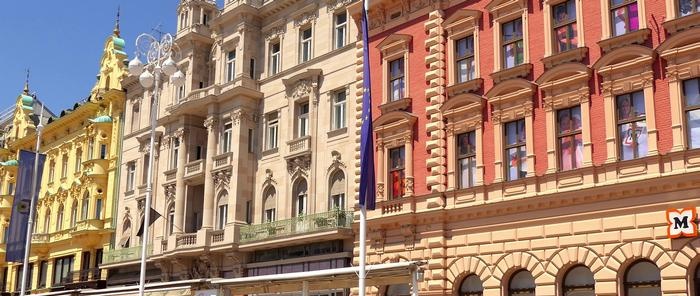 In the 13th century, the invasion of the Tatar-Mongols came to these places from the east. In one of the raids (in 1241), the cathedral in Kaptol was destroyed, but soon rebuilt again. In the 13th century, the invasion of the Tatar-Mongols came to these places from the east. In one of the raids (in 1241), the cathedral in Kaptol was destroyed, but soon rebuilt again.
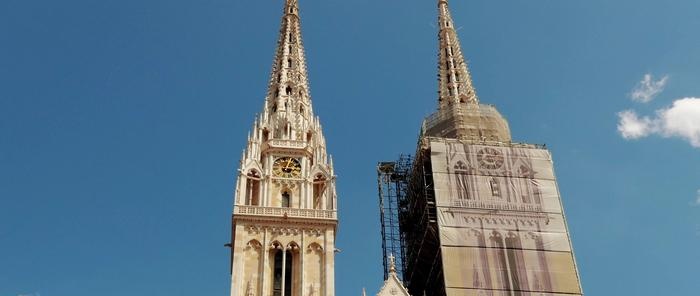 Hradec became a "free royal city", gaining a certain independence. Hradec became a "free royal city", gaining a certain independence.
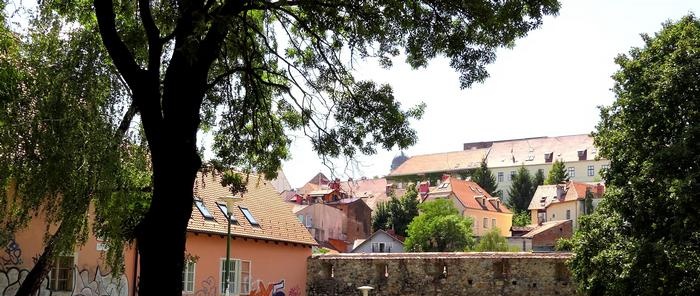 In the XIV century, a palace was built there - the residence of the Croatian-Hungarian kings. In the XIV century, a palace was built there - the residence of the Croatian-Hungarian kings.
 Both "cores" of Zagreb are being strengthened, first wooden walls are created, and later - stone walls, towers are being built. Common people begin to settle around the fortified centers. Both "cores" of Zagreb are being strengthened, first wooden walls are created, and later - stone walls, towers are being built. Common people begin to settle around the fortified centers.
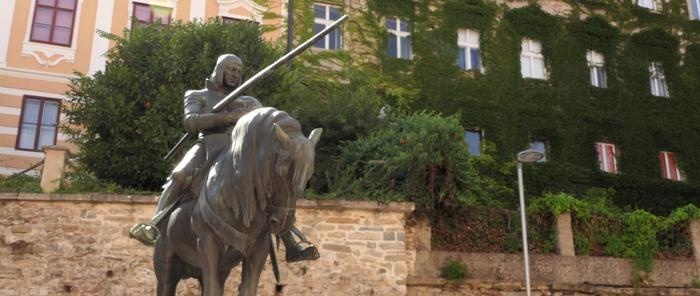 A rivalry develops between the two "cities", reaching up to armed clashes over land ownership, trade competition or primacy in all kinds of privileges. A rivalry develops between the two "cities", reaching up to armed clashes over land ownership, trade competition or primacy in all kinds of privileges.
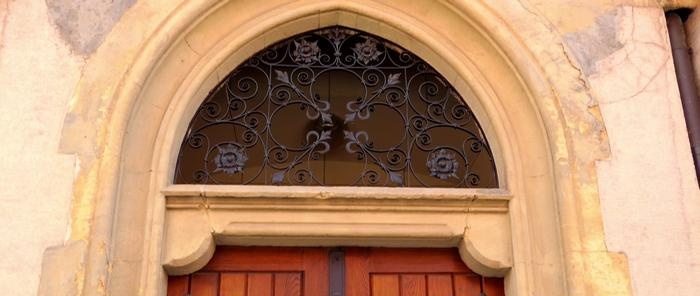 The cruel bloodshed that happened between them on the "Bloody Bridge" (across the stream separating the two "cities") is still remembered as one of the darkest pages of the medieval history of the city. The cruel bloodshed that happened between them on the "Bloody Bridge" (across the stream separating the two "cities") is still remembered as one of the darkest pages of the medieval history of the city.
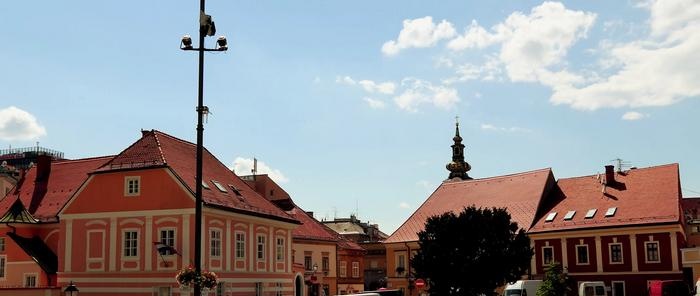 But the position of the city "between two fires" - the threats of Turkish troops in the east and Venetian troops in the west - leads to the fact that already in the 15th century the population was forced to build defensive structures and take measures of general protection. But the position of the city "between two fires" - the threats of Turkish troops in the east and Venetian troops in the west - leads to the fact that already in the 15th century the population was forced to build defensive structures and take measures of general protection.
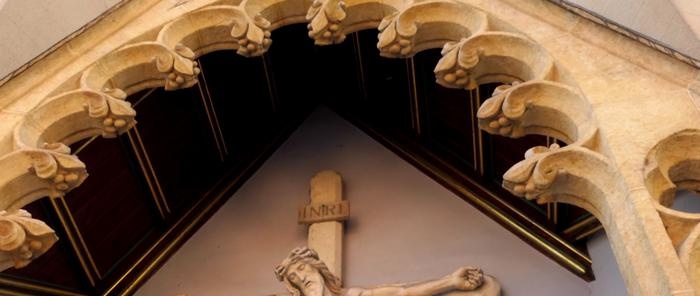 Zagreb is beginning to play more and more definitely the role of the main city of the Croatian lands. Zagreb is beginning to play more and more definitely the role of the main city of the Croatian lands.
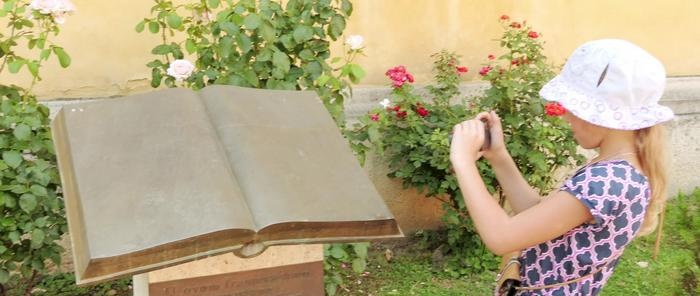 In the second half of the 16th century, a widespread peasant uprising against the feudal lords broke out in the country, which tragically ended in 1573 with the brutal public execution of his heroic leader Matija (Matvey) Gubets on the main square of Hradec. In the second half of the 16th century, a widespread peasant uprising against the feudal lords broke out in the country, which tragically ended in 1573 with the brutal public execution of his heroic leader Matija (Matvey) Gubets on the main square of Hradec.
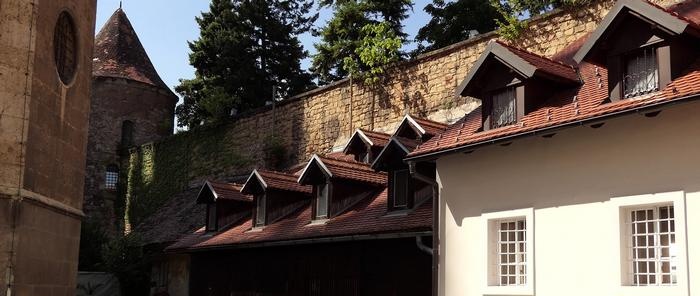 During these years, enmity again flares up between the two feudal rivals, due to the fact that Hradec supports King Ferdinand of Habsburg, and Kaptol - his protege to the Croatian throne Ivan Zapolsky. During these years, enmity again flares up between the two feudal rivals, due to the fact that Hradec supports King Ferdinand of Habsburg, and Kaptol - his protege to the Croatian throne Ivan Zapolsky.
 Both parts of the city were again hit hard by internecine clashes. Both parts of the city were again hit hard by internecine clashes.
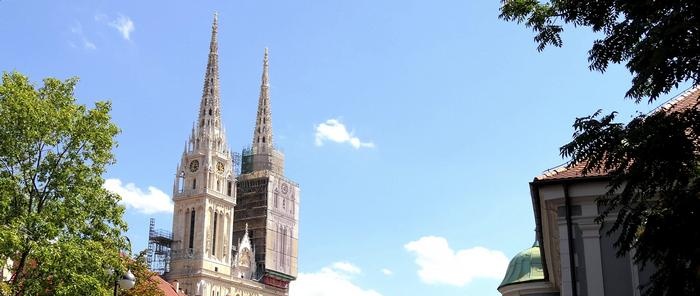 For the first time, it was only in 1557 that the united Zagreb was mentioned as the main city of the Croatian lands, although Hradec and Kaptol remained separated from each other until the middle of the 19th century. For the first time, it was only in 1557 that the united Zagreb was mentioned as the main city of the Croatian lands, although Hradec and Kaptol remained separated from each other until the middle of the 19th century.
 In the 17th century, when a permanent border with Turkish possessions was established, a more or less peaceful development of the city and its rapidly growing outskirts became possible. In the 17th century, when a permanent border with Turkish possessions was established, a more or less peaceful development of the city and its rapidly growing outskirts became possible.
 In the "free royal city" a senate of twelve noble people of the city elected for life is established, which ensures the power of the city aristocracy for a long time. In the "free royal city" a senate of twelve noble people of the city elected for life is established, which ensures the power of the city aristocracy for a long time.
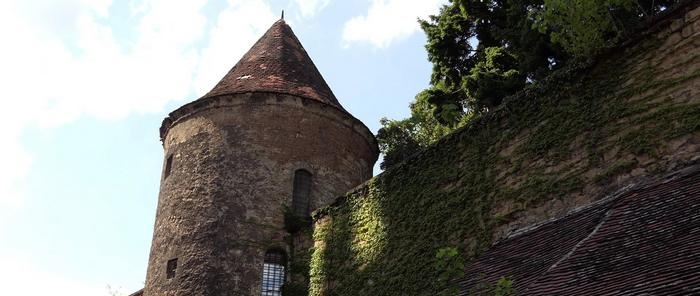 In Hradec, the development of the city is associated with the powerful influence of the Jesuit Order, who founded the first gymnasium with a student house, a monastery, the church of St. Katerina and the Higher School with theology, philosophy and law faculties. In Hradec, the development of the city is associated with the powerful influence of the Jesuit Order, who founded the first gymnasium with a student house, a monastery, the church of St. Katerina and the Higher School with theology, philosophy and law faculties.
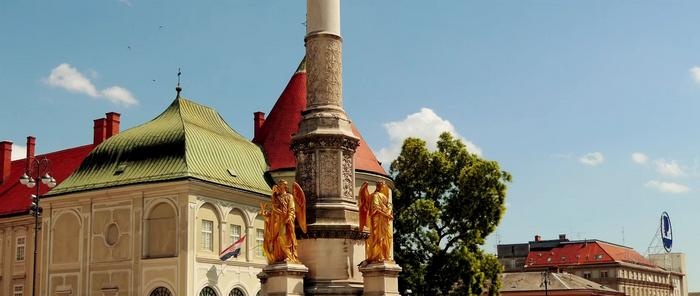 The first Croatian printing house was created on the initiative of the writer Pavel Ritter-Vitezovic. Handicraft workshops emerged. The first Croatian printing house was created on the initiative of the writer Pavel Ritter-Vitezovic. Handicraft workshops emerged.
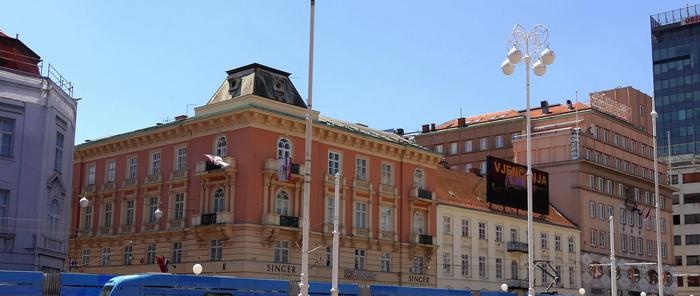 However, in the XVI-XVII centuries, cruel medieval order still reigned, with "witch hunts" and public executions for all sorts of petty crimes. However, in the XVI-XVII centuries, cruel medieval order still reigned, with "witch hunts" and public executions for all sorts of petty crimes.
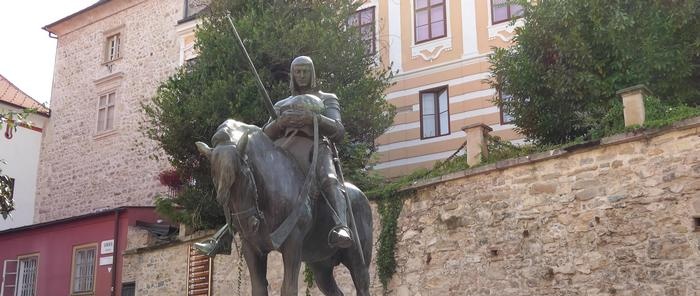 The city suffers from frequent fires, and this finally forces the residents to build brick and stone houses. The city suffers from frequent fires, and this finally forces the residents to build brick and stone houses.
 Little by little, the printed word is spreading, some printing houses publish books: for scientists, students and nobility in Latin, and for the common people in the "Kaikavian" Croatian dialect (from the word "kai" - "what"). Little by little, the printed word is spreading, some printing houses publish books: for scientists, students and nobility in Latin, and for the common people in the "Kaikavian" Croatian dialect (from the word "kai" - "what").
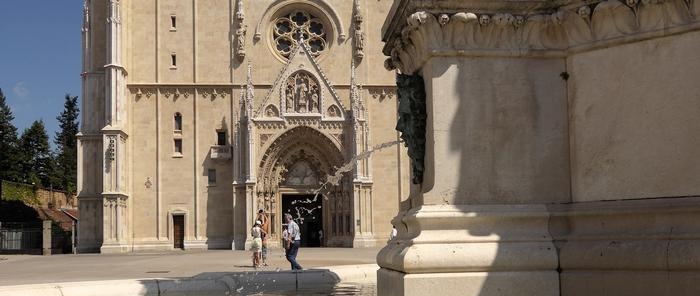 Different dialects of the Serbo-Croatian language were often divided by the sound of this union "what" in different regions of the country - Shtokavsky (INTO), Kaikavsky (Kai), Chaikavsky (tea), etc. Different dialects of the Serbo-Croatian language were often divided by the sound of this union "what" in different regions of the country - Shtokavsky (INTO), Kaikavsky (Kai), Chaikavsky (tea), etc.
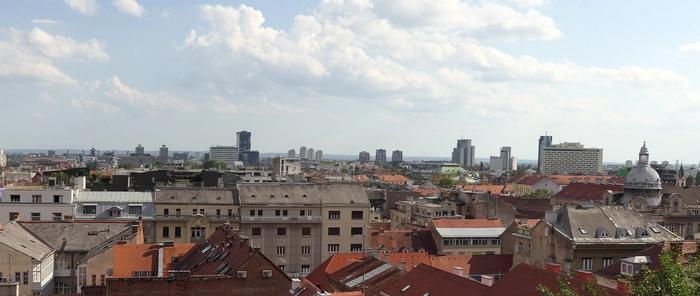 In the 18th century, the first textile factories, manufactories, and silkworm breeding appeared. The end of the 18th century and the first half of the 19th century were marked by the development of Croatian national culture. In the 18th century, the first textile factories, manufactories, and silkworm breeding appeared. The end of the 18th century and the first half of the 19th century were marked by the development of Croatian national culture.
 The Royal Academy of Sciences and Arts was founded, which became the embryo of the future University of Zagreb, a number of Croatian newspapers were published, a permanent theater, the National Museum were opened, several public Slavic cultural organizations were created on the initiative of the outstanding national figure Ludevit Gaj, and the struggle against Germanization and "Magyarization" of the Croatian population was growing. The Royal Academy of Sciences and Arts was founded, which became the embryo of the future University of Zagreb, a number of Croatian newspapers were published, a permanent theater, the National Museum were opened, several public Slavic cultural organizations were created on the initiative of the outstanding national figure Ludevit Gaj, and the struggle against Germanization and "Magyarization" of the Croatian population was growing.
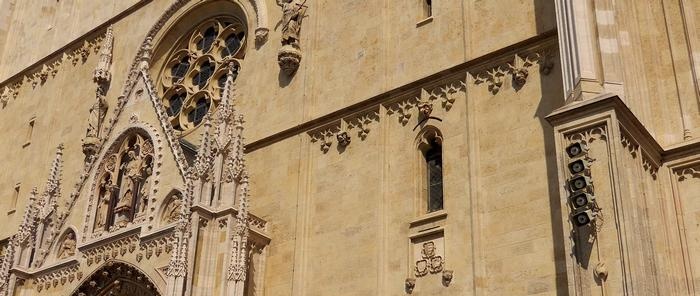 An attempted armed uprising against the Austro-Hungarian hegemony of 1848 was mercilessly suppressed and triggered a wave of brutal terror. An attempted armed uprising against the Austro-Hungarian hegemony of 1848 was mercilessly suppressed and triggered a wave of brutal terror.
 Finally, in 1850, Hradec and Kaptola were merged into a single city of Zagreb, with a common government and one mayor. Finally, in 1850, Hradec and Kaptola were merged into a single city of Zagreb, with a common government and one mayor.
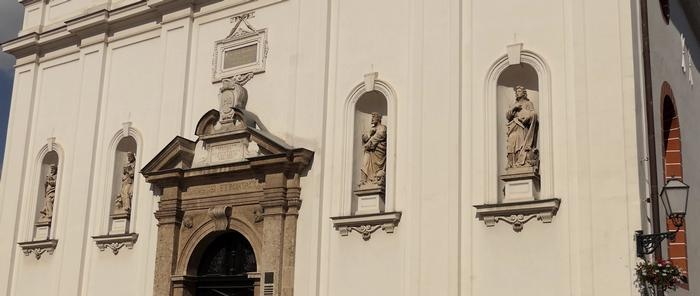 The industrial and cultural growth of the city was noted in the second half of the 19th and early 20th centuries. The industrial and cultural growth of the city was noted in the second half of the 19th and early 20th centuries.
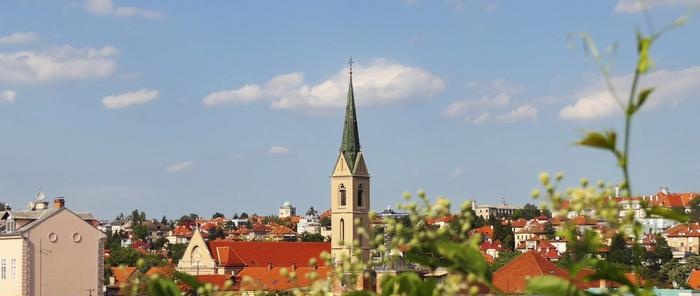 In 1862 Zagreb acquired a railway connection for the first time. In 1862 Zagreb acquired a railway connection for the first time.
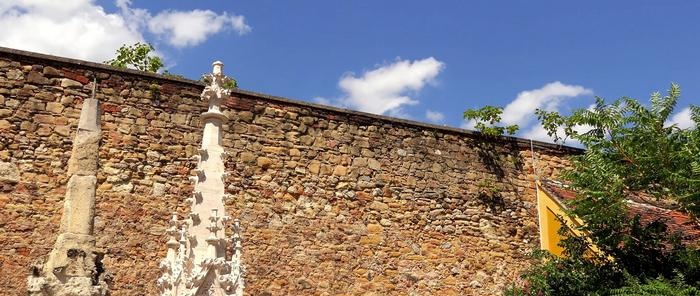 During this period, the Academy of Sciences and Arts, the Strosmeier Art Gallery, the University of Zagreb appeared; the theater begins to give performances in Croatian. During this period, the Academy of Sciences and Arts, the Strosmeier Art Gallery, the University of Zagreb appeared; the theater begins to give performances in Croatian.
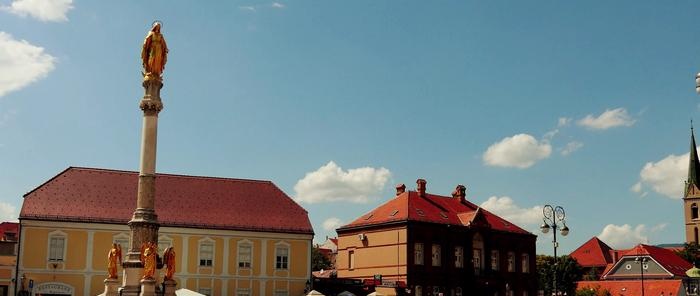 Zagreb becomes a center of European importance. Zagreb becomes a center of European importance.
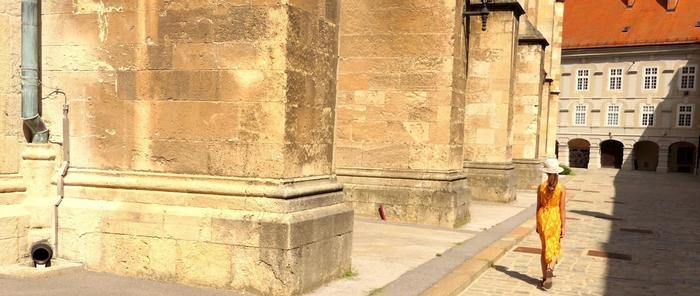 In terms of its appearance and culture, it is generally a Central European city. There are no Balkan features in it. In terms of its appearance and culture, it is generally a Central European city. There are no Balkan features in it.
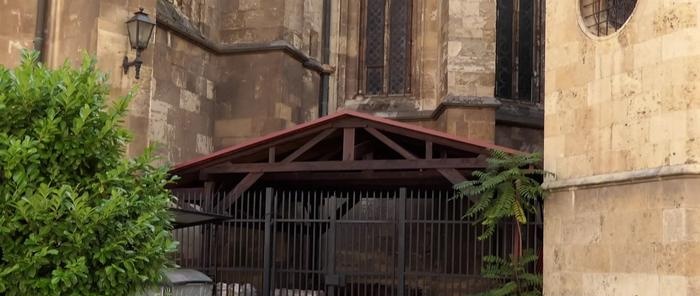 And in physical and geographical terms, the territory of Zagreb, like Ljubljana, no longer belongs to the Balkan Peninsula. And in physical and geographical terms, the territory of Zagreb, like Ljubljana, no longer belongs to the Balkan Peninsula.
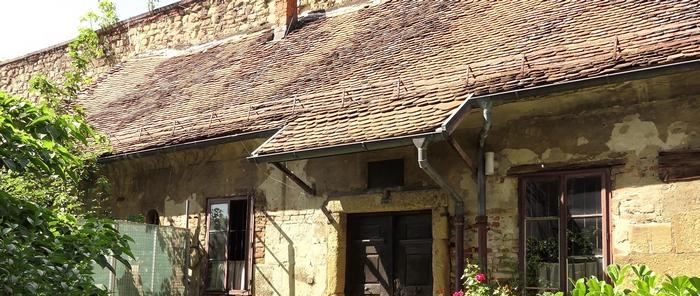 The influence of the Turkish East, which was felt to a large extent in old Belgrade, and especially in Sarajevo, is not in sight here. The influence of the Turkish East, which was felt to a large extent in old Belgrade, and especially in Sarajevo, is not in sight here.
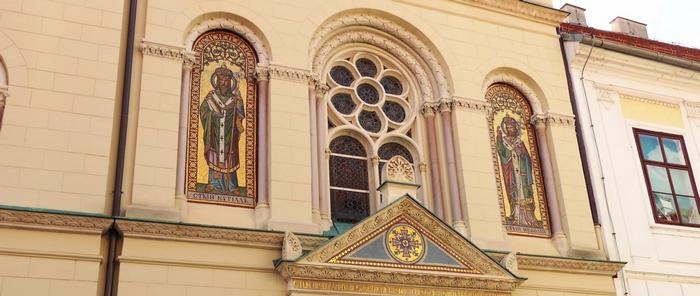 Zagreb and the influence of Italy and the Venetian Republic (next to which it was located), which was so strongly manifested in Split and Dubrovnik, touched little. Zagreb and the influence of Italy and the Venetian Republic (next to which it was located), which was so strongly manifested in Split and Dubrovnik, touched little.
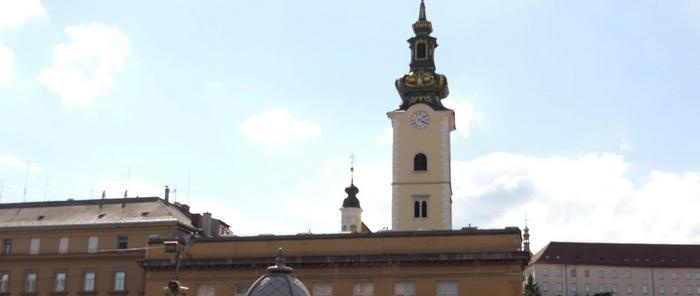 But, being for a long time a part of the Hungarian and Austro-Hungarian states, Zagreb took on many features of the Central European countries, carrying, however, through all the historical vicissitudes, its national Slavic culture. But, being for a long time a part of the Hungarian and Austro-Hungarian states, Zagreb took on many features of the Central European countries, carrying, however, through all the historical vicissitudes, its national Slavic culture.
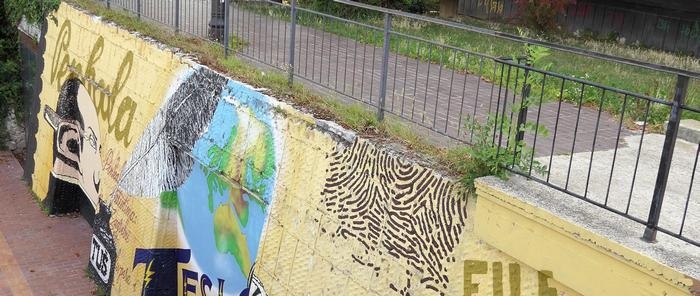 Old Zagreb is a city of Gothic and Baroque, which makes it more similar in appearance to Prague than to Belgrade. Old Zagreb is a city of Gothic and Baroque, which makes it more similar in appearance to Prague than to Belgrade.
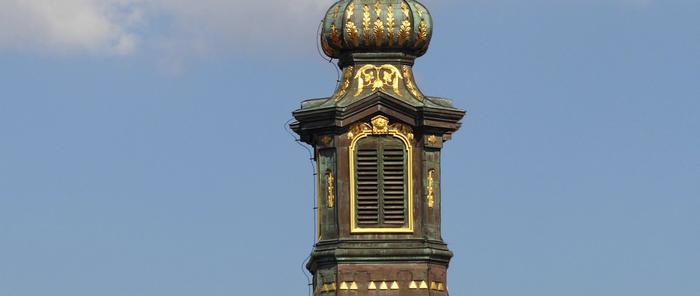 Tourism is one of the most important economic sectors of the city. Tourism is one of the most important economic sectors of the city.
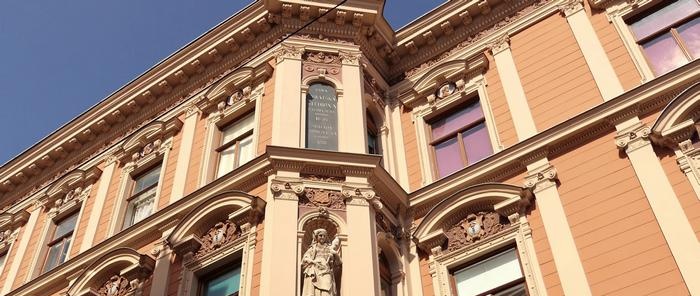 Tourists are attracted here by the historical monuments of the old city (Horni Grad, Kaptol), which we will talk about later, many interesting museums, theaters, concerts, art festivals, scientific congresses, excursions to the picturesque hilly and mountainous surroundings of Zagreb, medicinal thermal springs, in winter, skiing. Tourists are attracted here by the historical monuments of the old city (Horni Grad, Kaptol), which we will talk about later, many interesting museums, theaters, concerts, art festivals, scientific congresses, excursions to the picturesque hilly and mountainous surroundings of Zagreb, medicinal thermal springs, in winter, skiing.
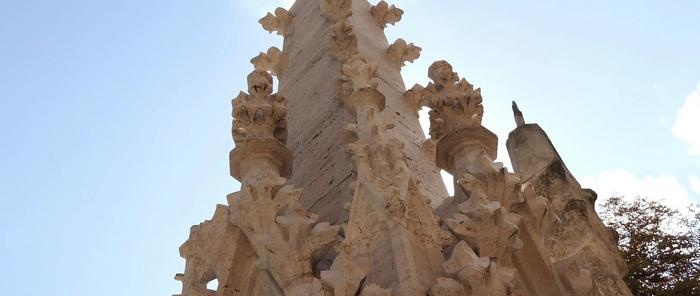 The tourist season actually lasts all year round in the city. The tourist season actually lasts all year round in the city.
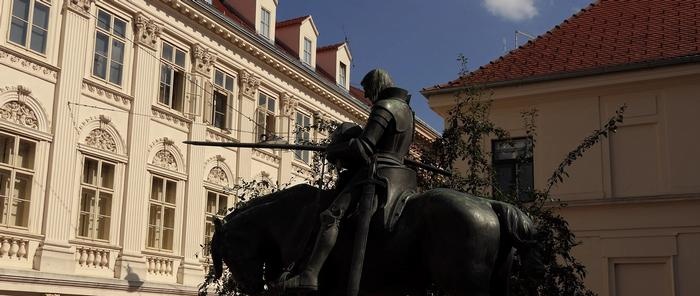 The trading life of the city is in full swing.Of the three large main markets, the Central one is the most interesting, reflecting the characteristics of Zagreb better than others. The trading life of the city is in full swing.Of the three large main markets, the Central one is the most interesting, reflecting the characteristics of Zagreb better than others.
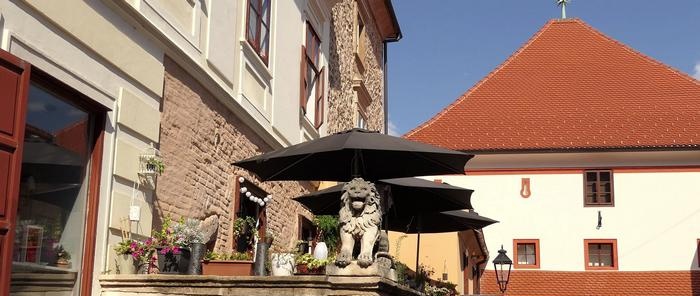 Previously, it was located on Republic Square, the busiest hub in the city. Previously, it was located on Republic Square, the busiest hub in the city.
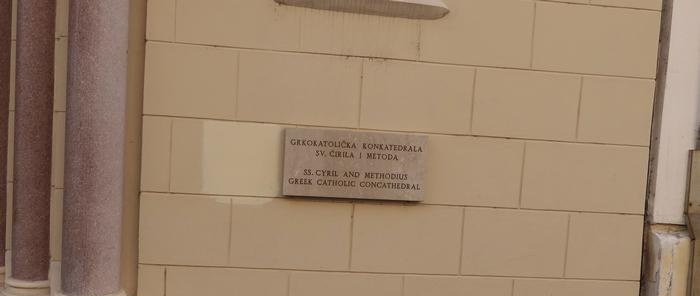 But with the growth and development of transport, it had to be moved a little further north, to Dolets Square, where it does not interfere with heavy traffic. But with the growth and development of transport, it had to be moved a little further north, to Dolets Square, where it does not interfere with heavy traffic.
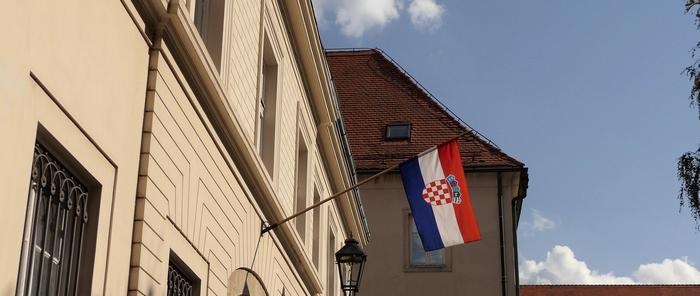 This market is not universal, but it is most popular among the local population and visitors to the city. This market is not universal, but it is most popular among the local population and visitors to the city.
 Of the products they sell mainly vegetables and fruits, but on the other hand, you will find here a wide selection of handicrafts: fine folk lace, which Croatia is famous for, colorful knitted garments, now fashionable jackets and sheepskin coats of rural production; a variety of wood products decorate the market stalls. Of the products they sell mainly vegetables and fruits, but on the other hand, you will find here a wide selection of handicrafts: fine folk lace, which Croatia is famous for, colorful knitted garments, now fashionable jackets and sheepskin coats of rural production; a variety of wood products decorate the market stalls.
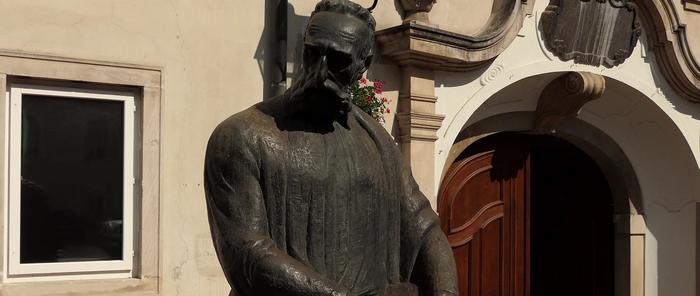 A rich flower market is located nearby. A rich flower market is located nearby.
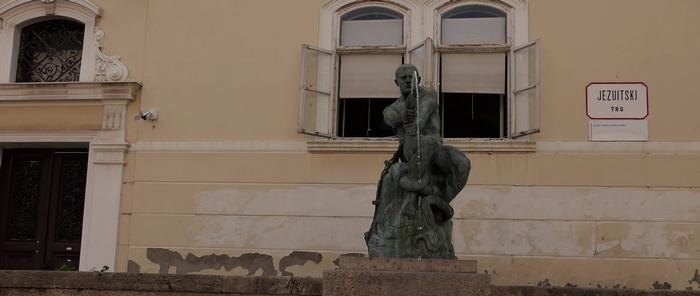 The inhabitants of Zagreb are predominantly Croats, speaking the Croatian dialect of the Serbo-Croatian language. The inhabitants of Zagreb are predominantly Croats, speaking the Croatian dialect of the Serbo-Croatian language.
 In the city, and especially in the surrounding villages, one can also hear a special "Kaikavian" dialect, characteristic of central and northwestern Croatia. In the city, and especially in the surrounding villages, one can also hear a special "Kaikavian" dialect, characteristic of central and northwestern Croatia.
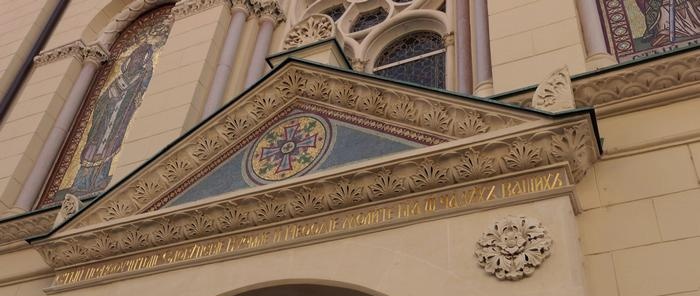 In the sphere of large cities, the typical external features of the population in our time are usually erased. In the sphere of large cities, the typical external features of the population in our time are usually erased.
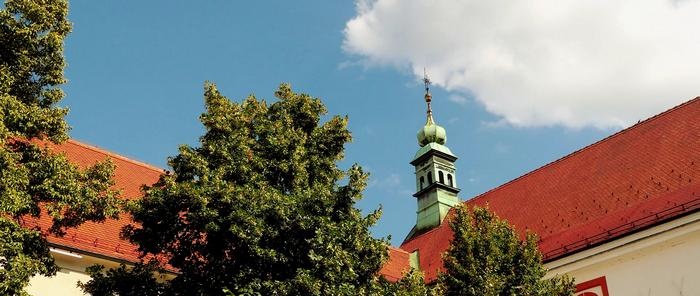 It is difficult to find picturesque folk costumes in the center of the city, except in the markets, and then only occasionally. It is difficult to find picturesque folk costumes in the center of the city, except in the markets, and then only occasionally.
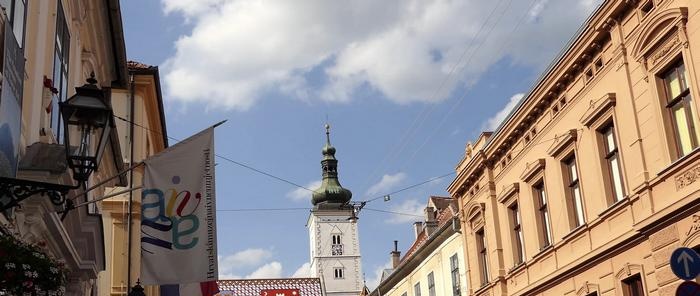 But in the surrounding villages they have been preserved quite well, and on holidays and now there is an opportunity to admire them. But in the surrounding villages they have been preserved quite well, and on holidays and now there is an opportunity to admire them.
 Croatian costumes of residents of the vicinity of Zagreb are significantly different from the clothing of the population of other cities, which we are talking about. Croatian costumes of residents of the vicinity of Zagreb are significantly different from the clothing of the population of other cities, which we are talking about.
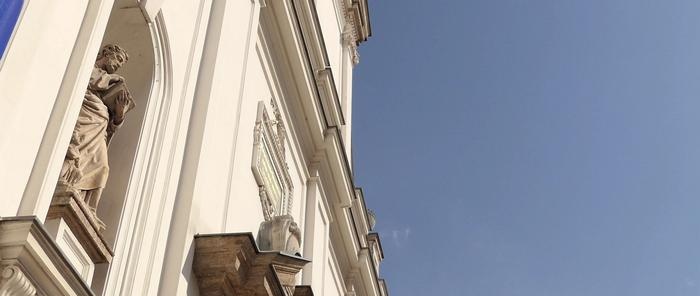 Here their Balkan features are lost and Central European ones begin to prevail. Here their Balkan features are lost and Central European ones begin to prevail.
 These costumes are peculiar, wide, loose clothes made of white linen are very characteristic. These costumes are peculiar, wide, loose clothes made of white linen are very characteristic.
 Men's peasant clothing consists of a white linen shirt and linen wide trousers tucked into high-toed boots. Men's peasant clothing consists of a white linen shirt and linen wide trousers tucked into high-toed boots.
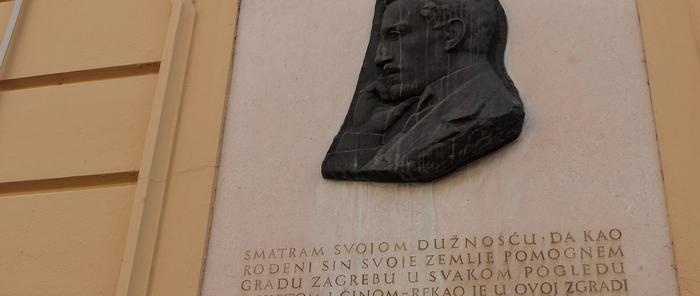 The shirts are belted with a leather sash with a buckle. The shirts are belted with a leather sash with a buckle.
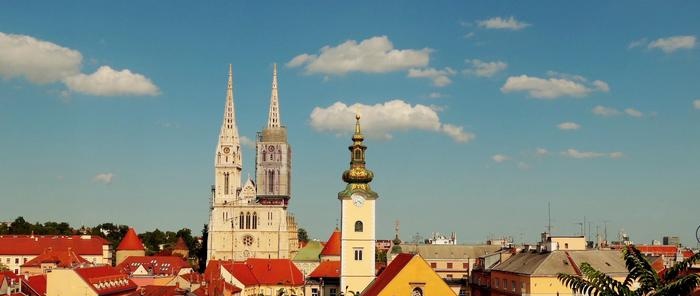 The vest (sleeveless jacket) is small, finely and richly embroidered. The vest (sleeveless jacket) is small, finely and richly embroidered.
 The top cloth jacket is sometimes thrown over one shoulder out of panache, in the manner of a hussar mentic. The top cloth jacket is sometimes thrown over one shoulder out of panache, in the manner of a hussar mentic.
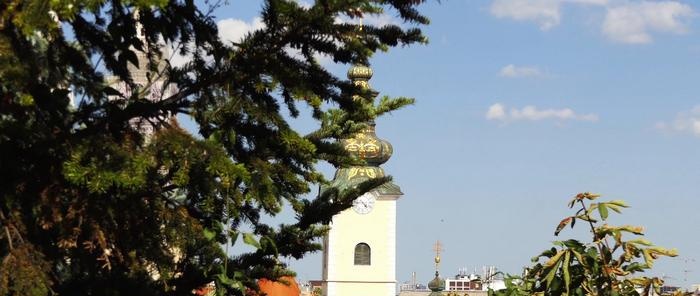 Men wear a hemispherical black cap with very narrow, upward-curved brims, usually decorated with colored ribbons. Men wear a hemispherical black cap with very narrow, upward-curved brims, usually decorated with colored ribbons.
 The women wear the same white shirts, a white skirt just below the knees, white knitted stockings with bright red garters under the knees, on their legs - the Croatian version of the “opanks” that are unchanged in Yugoslavia. The women wear the same white shirts, a white skirt just below the knees, white knitted stockings with bright red garters under the knees, on their legs - the Croatian version of the “opanks” that are unchanged in Yugoslavia.
 Embroidered sleeveless jackets are often trimmed with fur. Embroidered sleeveless jackets are often trimmed with fur.
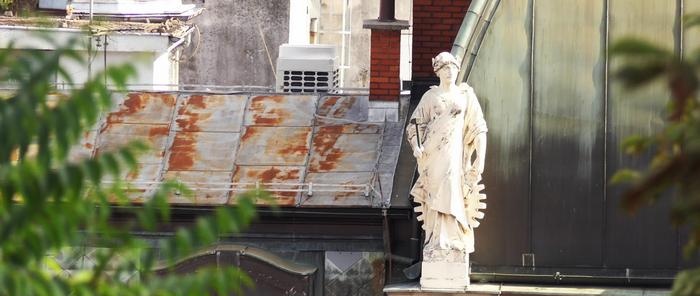 The woman's waist is girded with a red scarf, one of the corners of which descends from the front in the manner of an apron. The woman's waist is girded with a red scarf, one of the corners of which descends from the front in the manner of an apron.
 On the head - over the tattoo - a motley shawl. On the head - over the tattoo - a motley shawl.
 In both men's and women's suits, two colors definitely dominate - white and red, occasionally blue is also slightly used. In both men's and women's suits, two colors definitely dominate - white and red, occasionally blue is also slightly used.
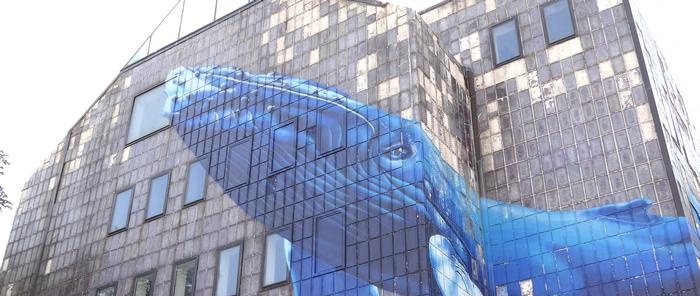 Costume decorations usually consist of appliqués — various sewn multi-colored stripes and ribbons with a small characteristic pattern. Costume decorations usually consist of appliqués — various sewn multi-colored stripes and ribbons with a small characteristic pattern.
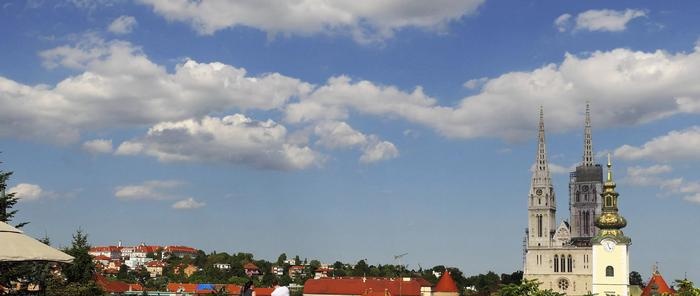 To get an idea of the geography of the main districts of Zagreb, let's take a look at the city, climbing to the very top of a 16-storey "skyscraper", standing in the very center, on Republic Square. To get an idea of the geography of the main districts of Zagreb, let's take a look at the city, climbing to the very top of a 16-storey "skyscraper", standing in the very center, on Republic Square.
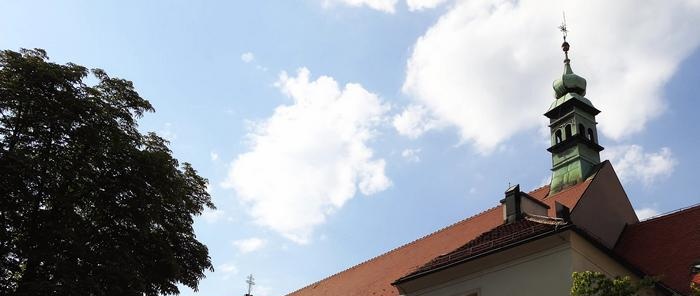 In the north, the calm, gentle relief of the Medvednitsa Mountain turns blue. Now the suburbs of Zagreb are approaching it, gradually rising, almost close. In the north, the calm, gentle relief of the Medvednitsa Mountain turns blue. Now the suburbs of Zagreb are approaching it, gradually rising, almost close.
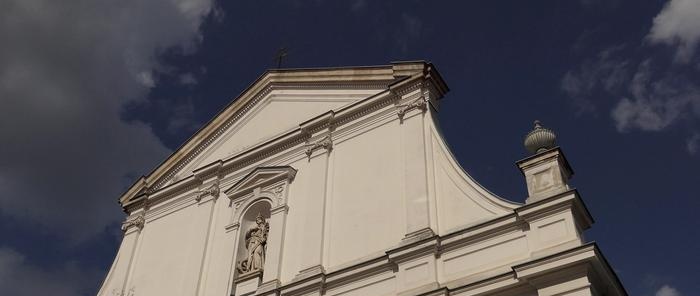 The residential part of the city, expanding, displaces old villages from the slopes. To the south, on small hills, are the most ancient sites of old Zagreb. The residential part of the city, expanding, displaces old villages from the slopes. To the south, on small hills, are the most ancient sites of old Zagreb.
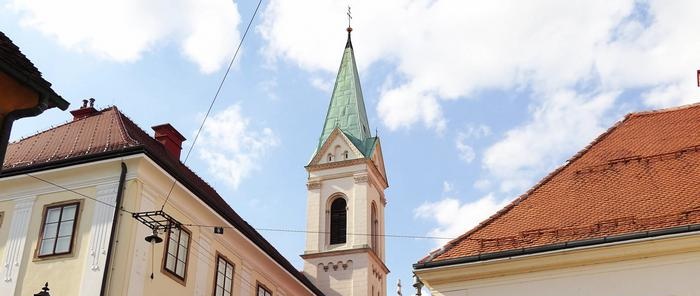 To the west is the Upper Town with the dominant bell tower of St. Mark, and to the east and slightly lower - Kaptol with two belfries of the cathedral visible from everywhere. Behind Kaptol, on a small hill, is Mirogoy, a cemetery area with a spectacular white dome of a marble church. To the west of the Upper Town, on one of the flat spurs descending to the center, is the Tushkanats forest park. In the east of the upper strip of the city, the vast tracts of the Maksimir park complex are green. To the west is the Upper Town with the dominant bell tower of St. Mark, and to the east and slightly lower - Kaptol with two belfries of the cathedral visible from everywhere. Behind Kaptol, on a small hill, is Mirogoy, a cemetery area with a spectacular white dome of a marble church. To the west of the Upper Town, on one of the flat spurs descending to the center, is the Tushkanats forest park. In the east of the upper strip of the city, the vast tracts of the Maksimir park complex are green.
 Below us is the old city center, Republic Square, from which one of the main shopping streets, Jlica, stretches to the west.It serves as a border between the historic Upper Town (Horní Grad, formerly Hradec) and the Lower Town, built up according to the plan, mainly in the 19th century. Below us is the old city center, Republic Square, from which one of the main shopping streets, Jlica, stretches to the west.It serves as a border between the historic Upper Town (Horní Grad, formerly Hradec) and the Lower Town, built up according to the plan, mainly in the 19th century.
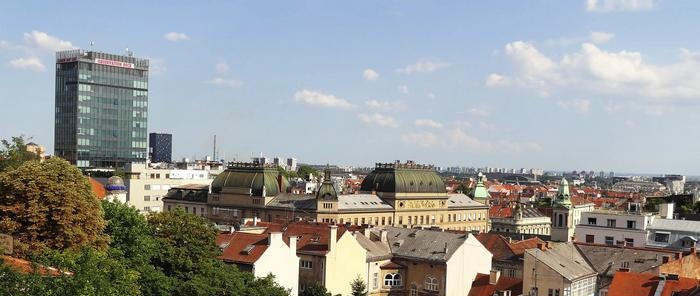 In the latter, many cultural and other modern institutions are concentrated on a vast flat area. In the latter, many cultural and other modern institutions are concentrated on a vast flat area.
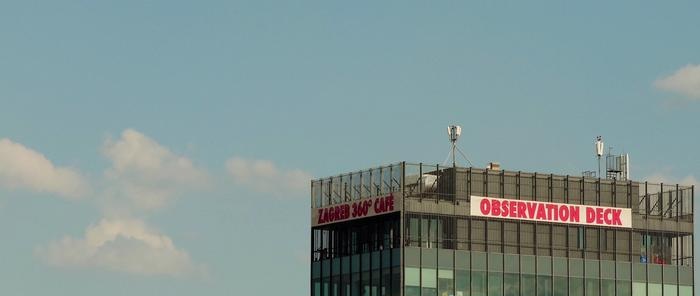 This is, to a large extent, the business part of the city, stretching south all the way to the station. Further beyond the train station and the railway lines that cross the city from west to east, spacious districts of new Zagreb emerged not so long ago, both on the northern and southern shores of the Sava. This is, to a large extent, the business part of the city, stretching south all the way to the station. Further beyond the train station and the railway lines that cross the city from west to east, spacious districts of new Zagreb emerged not so long ago, both on the northern and southern shores of the Sava.
 In the west of the southern part of the city, in the place where there were once poor quarters of the working people, a new, modern residential area Treshnevka has grown, reminiscent of our Moscow Cheryomushki. Concluding the inspection of the territory from a high-rise building, one important circumstance should be noted: Zagreb escaped major destruction during the last war. In the west of the southern part of the city, in the place where there were once poor quarters of the working people, a new, modern residential area Treshnevka has grown, reminiscent of our Moscow Cheryomushki. Concluding the inspection of the territory from a high-rise building, one important circumstance should be noted: Zagreb escaped major destruction during the last war.
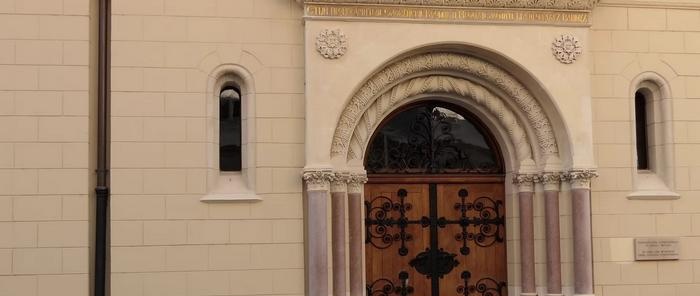 Having admired the vast panorama of the city, lost in the south in the boundless plain of Turo-polja, and getting off our "skyscraper", now we will go around several places of interest in different parts of Zagreb. We went to Republic Square, which is still considered the center of the city. Having admired the vast panorama of the city, lost in the south in the boundless plain of Turo-polja, and getting off our "skyscraper", now we will go around several places of interest in different parts of Zagreb. We went to Republic Square, which is still considered the center of the city.
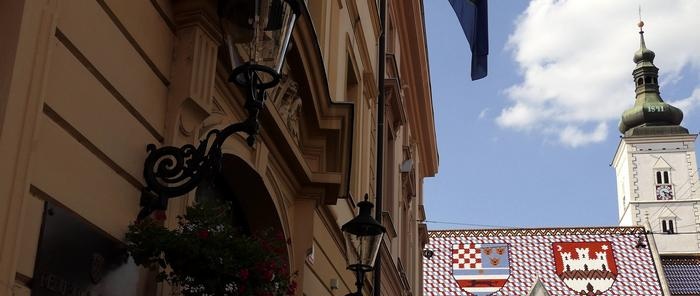 It was surrounded by large, solid buildings of various styles that had been built over the past hundred years. There is one of the best hotels "Dubrovnik", "City Cafe", "City Cellar" (with the best wines), a very old central pharmacy, travel agencies, handicraft and souvenir shops. It was surrounded by large, solid buildings of various styles that had been built over the past hundred years. There is one of the best hotels "Dubrovnik", "City Cafe", "City Cellar" (with the best wines), a very old central pharmacy, travel agencies, handicraft and souvenir shops.
 You can climb to the Upper Town from here along a short funicular line, and then we will get straight to the ancient four-sided tower "Lotrschak", which once notified the population with a bell about the evening closure of all city gates. But you can also walk and enter the old Horni Grad through the historic Stone Gate - the only one that has survived in the city, over which a heavy squat tower rises. They acquired their present appearance at the beginning of the 18th century. You can climb to the Upper Town from here along a short funicular line, and then we will get straight to the ancient four-sided tower "Lotrschak", which once notified the population with a bell about the evening closure of all city gates. But you can also walk and enter the old Horni Grad through the historic Stone Gate - the only one that has survived in the city, over which a heavy squat tower rises. They acquired their present appearance at the beginning of the 18th century.
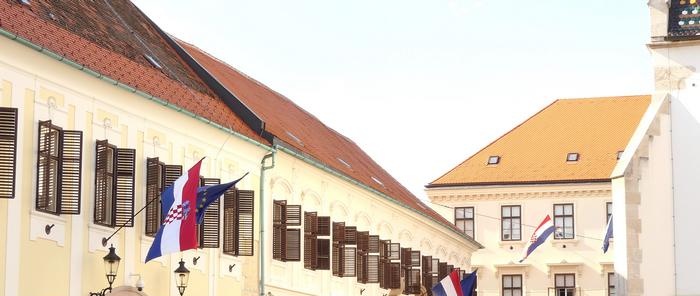 In the old town, the massive buildings of the Jesuit monastery with a valuable architectural monument - the church of St. Catherine's in the Baroque style (XVII century), located on the square of Catherine. The latter, however, is not named after “St. Katerina ”, and named after the widow of a prominent Croatian leader Peter Zrinsky, who was executed in Vienna in connection with a conspiracy against the Habsburg dynasty. She was a poet and a prominent cultural figure of her time. In the old town, the massive buildings of the Jesuit monastery with a valuable architectural monument - the church of St. Catherine's in the Baroque style (XVII century), located on the square of Catherine. The latter, however, is not named after “St. Katerina ”, and named after the widow of a prominent Croatian leader Peter Zrinsky, who was executed in Vienna in connection with a conspiracy against the Habsburg dynasty. She was a poet and a prominent cultural figure of her time.
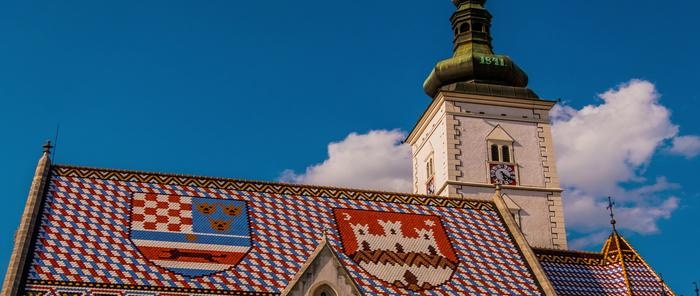 One of the best and oldest decorations in the city is the church of St. Mark, located in the Upper Town on the square of the same name. One of the best and oldest decorations in the city is the church of St. Mark, located in the Upper Town on the square of the same name.
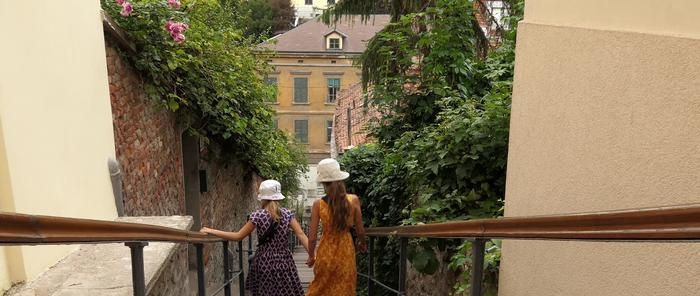 On this square, attention is drawn to the red and white square, marking the place where the legendary leader of the peasant uprising, the “peasant king”, as the aristocracy contemptuously called him, Matiya Gubets, was executed in the 16th century (previously “crowned” with a red-hot iron crown). The high roof of the ancient church of St. The stamp is covered with colored ceramic tiles, which compose huge images of two coats of arms: the city of Zagreb and Croatia. This temple is already mentioned in the manuscripts of the 13th century, but the late Gothic version of reconstruction that has come down to us dates back to the 14th-15th centuries. It has now been converted into a museum and its interior is decorated with modern frescoes by the artist Klijaković on themes from the history of Croatia and sculptures by Meštrović. On this square, attention is drawn to the red and white square, marking the place where the legendary leader of the peasant uprising, the “peasant king”, as the aristocracy contemptuously called him, Matiya Gubets, was executed in the 16th century (previously “crowned” with a red-hot iron crown). The high roof of the ancient church of St. The stamp is covered with colored ceramic tiles, which compose huge images of two coats of arms: the city of Zagreb and Croatia. This temple is already mentioned in the manuscripts of the 13th century, but the late Gothic version of reconstruction that has come down to us dates back to the 14th-15th centuries. It has now been converted into a museum and its interior is decorated with modern frescoes by the artist Klijaković on themes from the history of Croatia and sculptures by Meštrović.
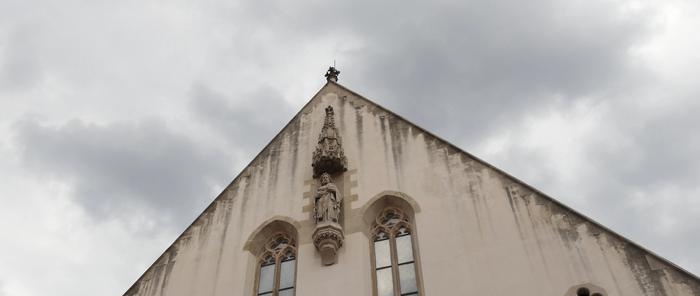 Not far, just to the east of the Upper Town, is its old rival, the fortress city of Kaptol, which was once the center of the spiritual authorities of Zagreb. The stream that separated them, as you remember, disappeared into the new buildings of the city. The strife that tormented the city for many centuries also disappeared. In the center of Kaptol there is a huge cathedral and the surrounding buildings of the Archbishop's court, built during the 17th, 18th and 19th centuries, walls and towers of fortifications erected during the era of the Turkish invasion. Not far, just to the east of the Upper Town, is its old rival, the fortress city of Kaptol, which was once the center of the spiritual authorities of Zagreb. The stream that separated them, as you remember, disappeared into the new buildings of the city. The strife that tormented the city for many centuries also disappeared. In the center of Kaptol there is a huge cathedral and the surrounding buildings of the Archbishop's court, built during the 17th, 18th and 19th centuries, walls and towers of fortifications erected during the era of the Turkish invasion.
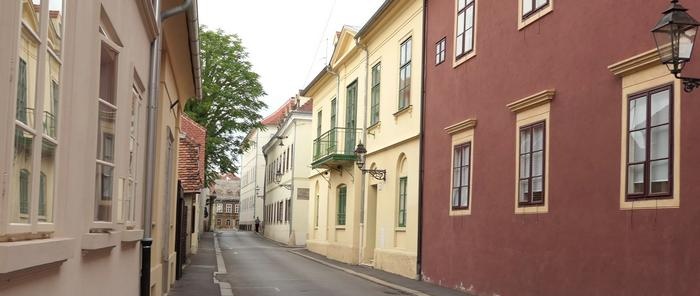 The cathedral was destroyed and rebuilt several times.In the 13th century, it was rebuilt in the Romanesque style, then destroyed during the raid of the Tatars, rebuilt again, was subjected to repeated fires, and finally, the earthquake of 1880 inflicted severe damage on it. It acquired its present appearance with two pointed Gothic belfries only at the end of the 19th century. The cathedral is famous for its organ, powerful bell, and many artistic treasures inside the temple and on its portals. The cathedral was destroyed and rebuilt several times.In the 13th century, it was rebuilt in the Romanesque style, then destroyed during the raid of the Tatars, rebuilt again, was subjected to repeated fires, and finally, the earthquake of 1880 inflicted severe damage on it. It acquired its present appearance with two pointed Gothic belfries only at the end of the 19th century. The cathedral is famous for its organ, powerful bell, and many artistic treasures inside the temple and on its portals.
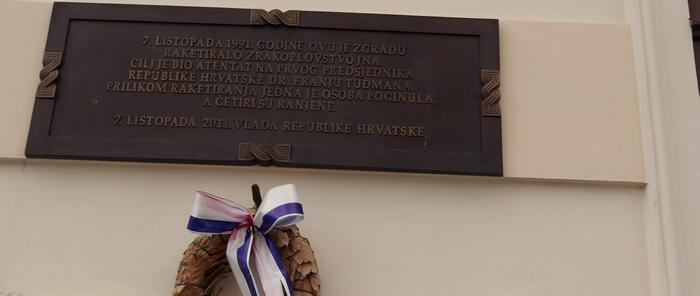 The lower town (Donji Grad) is currently mainly the business part of the city, which also houses many museums and other cultural institutions. Parks and squares stretch from the station towards the center (towards Republic Square). In the park in front of the station (Tomislav Square) there is a monument to the Croatian king Tomislav, who is depicted on horseback with a raised sword. Behind it, in the depths of the square, there is an elegant building with a high dome of the late 19th century - the Pavilion of Arts. A little further, on Strosmeier Square, there is the house of the Yugoslav Academy of Sciences and Arts, and in front of it is a monument to Strosmeier, a bishop and a prominent figure of Croatian culture. The lower town (Donji Grad) is currently mainly the business part of the city, which also houses many museums and other cultural institutions. Parks and squares stretch from the station towards the center (towards Republic Square). In the park in front of the station (Tomislav Square) there is a monument to the Croatian king Tomislav, who is depicted on horseback with a raised sword. Behind it, in the depths of the square, there is an elegant building with a high dome of the late 19th century - the Pavilion of Arts. A little further, on Strosmeier Square, there is the house of the Yugoslav Academy of Sciences and Arts, and in front of it is a monument to Strosmeier, a bishop and a prominent figure of Croatian culture.
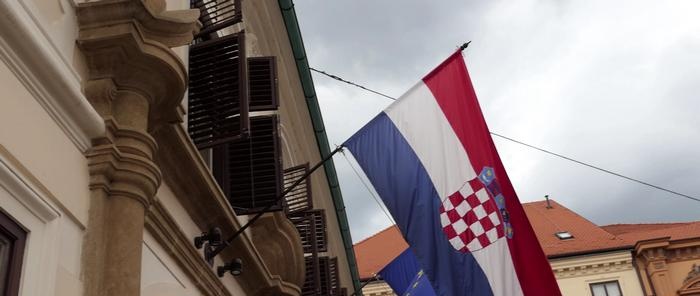 A similar complex of parks, squares and buildings is located in the western part of the Lower City. It starts from the Botanical Garden and includes Marulic Square with the imposing building of the combined National and University Library, behind which is the Croatian National Theater, built in the classical style of theaters of the late 19th century. Further, one of the main buildings of the University of Zagreb rises. A similar complex of parks, squares and buildings is located in the western part of the Lower City. It starts from the Botanical Garden and includes Marulic Square with the imposing building of the combined National and University Library, behind which is the Croatian National Theater, built in the classical style of theaters of the late 19th century. Further, one of the main buildings of the University of Zagreb rises.
 In the northeastern part of the city, the largest park complex Maksimir, founded in the 18th century, stretches on the hills with wide alleys, dense tree plantations, lakes, streams, picturesque gazebos, pavilions and observation platforms. The Zoological Garden was created on the shores of the Lower Lake. In the northeastern part of the city, the largest park complex Maksimir, founded in the 18th century, stretches on the hills with wide alleys, dense tree plantations, lakes, streams, picturesque gazebos, pavilions and observation platforms. The Zoological Garden was created on the shores of the Lower Lake.
 Moving south and crossing the railway lines passing through the city, we find ourselves in the districts of new Zagreb, in which not only new buildings of administrative, cultural and tourist institutions are concentrated, but also many industrial enterprises. The main street of the left-bank part of the new city stretches east-west. On it are the largest hotel "Internationale", the Palace of Justice, as well as the large concert and congress hall "Butroslav Lisinsky" built according to the latest architecture. Moving south and crossing the railway lines passing through the city, we find ourselves in the districts of new Zagreb, in which not only new buildings of administrative, cultural and tourist institutions are concentrated, but also many industrial enterprises. The main street of the left-bank part of the new city stretches east-west. On it are the largest hotel "Internationale", the Palace of Justice, as well as the large concert and congress hall "Butroslav Lisinsky" built according to the latest architecture.
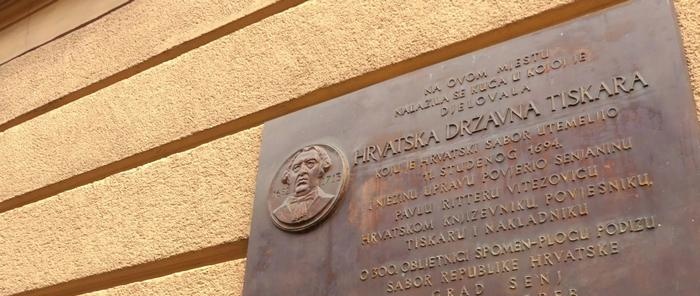 Four modern bridges across the Sava connect the city with its "Zasava" part, or the new Zagreb in its narrower sense. Here is the Kaiseritsa hippodrome, Lake Bundek with new baths, sports stadiums. Further south, the roads to the new bus station and the central airport of the city of Zagreb stretch. Four modern bridges across the Sava connect the city with its "Zasava" part, or the new Zagreb in its narrower sense. Here is the Kaiseritsa hippodrome, Lake Bundek with new baths, sports stadiums. Further south, the roads to the new bus station and the central airport of the city of Zagreb stretch.
 Of particular interest for acquaintance with the surroundings of the city is, of course, an excursion to the wooded mountain Medvednitsa. When climbing a motor road, it makes at least 20 serpentines. In this way, you can quickly familiarize yourself with the life of villages and suburbs. Of particular interest for acquaintance with the surroundings of the city is, of course, an excursion to the wooded mountain Medvednitsa. When climbing a motor road, it makes at least 20 serpentines. In this way, you can quickly familiarize yourself with the life of villages and suburbs.
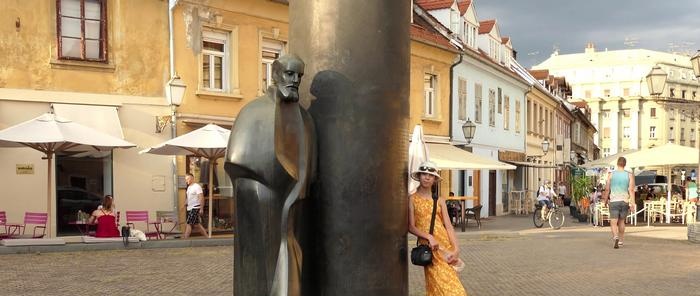 But if you neglect this and use the cable car, it will take you out of the city with a direct flight directly to the ridge of the mountain, where you will find hotels and restaurants, you can admire the picturesque landscapes of the Croatian Zagorje, which lies north of the ridge. It is a densely populated area with large settlements with textile factories. However, it is still dominated by the life-giving green color of endless gardens, vineyards and meadows. The district has a very important function: it supplies the capital with agricultural products. But if you neglect this and use the cable car, it will take you out of the city with a direct flight directly to the ridge of the mountain, where you will find hotels and restaurants, you can admire the picturesque landscapes of the Croatian Zagorje, which lies north of the ridge. It is a densely populated area with large settlements with textile factories. However, it is still dominated by the life-giving green color of endless gardens, vineyards and meadows. The district has a very important function: it supplies the capital with agricultural products.
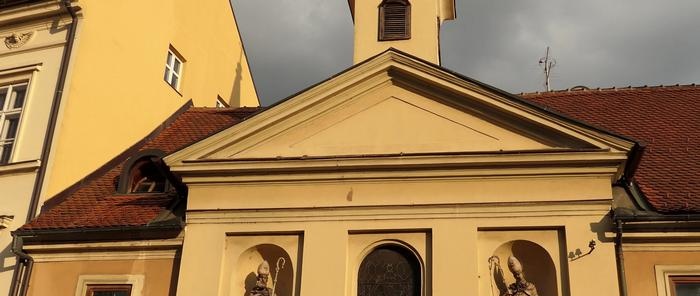 But the main thing for which it is worth climbing a thousand-meter mountain is the opportunity to summarize the acquaintance with the city and, turning to the south, to capture with one glance the entire vast panorama of old Zagreb, about which we were able to tell only the most basic and which still contains many instructive and interesting. But the main thing for which it is worth climbing a thousand-meter mountain is the opportunity to summarize the acquaintance with the city and, turning to the south, to capture with one glance the entire vast panorama of old Zagreb, about which we were able to tell only the most basic and which still contains many instructive and interesting.
Grebenshchikov O.S.
|
 In ancient times, one of the Croatian bans (ban - leader, ruler, sometimes the king's deputy) led his army along the edge where the city now stands. There was a hot, debilitating drought. The warriors suffered from an excruciating thirst. At a halt, the ban thrust his sword into the ground, and a fountain of cold water suddenly gushed out of it. Ban called his army to the source of salvation, exclaiming: "Rake!" And the warriors - some with a helmet, some with their palms - began to "rake in" and drink life-giving moisture. From there, allegedly, the name of the city is Zagreb. So the legend says. However, according to another Croatian version, "zagreb" in the old Croatian language meant a mound (that which was "raked up"), a fortification, a hill fort. It is possible that the name of the city came from the first settlement erected here ...
In ancient times, one of the Croatian bans (ban - leader, ruler, sometimes the king's deputy) led his army along the edge where the city now stands. There was a hot, debilitating drought. The warriors suffered from an excruciating thirst. At a halt, the ban thrust his sword into the ground, and a fountain of cold water suddenly gushed out of it. Ban called his army to the source of salvation, exclaiming: "Rake!" And the warriors - some with a helmet, some with their palms - began to "rake in" and drink life-giving moisture. From there, allegedly, the name of the city is Zagreb. So the legend says. However, according to another Croatian version, "zagreb" in the old Croatian language meant a mound (that which was "raked up"), a fortification, a hill fort. It is possible that the name of the city came from the first settlement erected here ... The capital of Croatia, the millennial “old Zagreb”, as residents love their city, is spread over a vast area in our time, descending from the foot of the Medvednitsa mountain into the vast valley of the Sava River and in recent years developing its right-bank part as well.
The capital of Croatia, the millennial “old Zagreb”, as residents love their city, is spread over a vast area in our time, descending from the foot of the Medvednitsa mountain into the vast valley of the Sava River and in recent years developing its right-bank part as well. Big cities always appear in geographically favorable places for humans. So it is here: the fertile valley of the middle reaches of the still transparent Sava, which emerges from the mountain valleys near Zagreb into the wide Pannonian plain, the southern gentle slopes of the Medvednica mountain, which protects the valley from northern winds and is covered with deciduous forests, numerous rivers running down from these slopes - all favored human settlement.
Big cities always appear in geographically favorable places for humans. So it is here: the fertile valley of the middle reaches of the still transparent Sava, which emerges from the mountain valleys near Zagreb into the wide Pannonian plain, the southern gentle slopes of the Medvednica mountain, which protects the valley from northern winds and is covered with deciduous forests, numerous rivers running down from these slopes - all favored human settlement. And the climate here is mild, temperate - the average annual temperature is 11.6 ° (for comparison: in Moscow, only about 3.6 °). Summers are warm, without droughts (average July temperature - 22.1 °).
And the climate here is mild, temperate - the average annual temperature is 11.6 ° (for comparison: in Moscow, only about 3.6 °). Summers are warm, without droughts (average July temperature - 22.1 °). The softening influence of the nearby Mediterranean is expressed in a relatively warm winter: the average January temperature is never below zero (about 0.7 °).
The softening influence of the nearby Mediterranean is expressed in a relatively warm winter: the average January temperature is never below zero (about 0.7 °). The rainiest time is late spring, early summer and late autumn (in just a year, 865 millimeters of precipitation falls here, with a maximum in May, June and October).
The rainiest time is late spring, early summer and late autumn (in just a year, 865 millimeters of precipitation falls here, with a maximum in May, June and October). The vegetation is still influenced by the continental climate of Central Europe. The surrounding mountains are covered with still preserved oak and hornbeam forests (with rock oak) with an admixture of wild cherry, field maple, and linden.
The vegetation is still influenced by the continental climate of Central Europe. The surrounding mountains are covered with still preserved oak and hornbeam forests (with rock oak) with an admixture of wild cherry, field maple, and linden. There are also areas of the forest with edible chestnuts.
There are also areas of the forest with edible chestnuts. Among them, there are also more rare local species - haketiya, kandyk, or dog's tooth, epimedium mountain goat.
Among them, there are also more rare local species - haketiya, kandyk, or dog's tooth, epimedium mountain goat. On the plain of Turopolye, adjacent to the floodplain of the Sava, once there were marsh low-lying oak forests (from the pedunculate oak), of which only individual forest "islands" remain.
On the plain of Turopolye, adjacent to the floodplain of the Sava, once there were marsh low-lying oak forests (from the pedunculate oak), of which only individual forest "islands" remain. Ash and elm grow here with oak, and in the abundant underbrush - buckthorn, viburnum and gorse bushes blooming in golden bunches of yellow flowers. The Sava River on the plain changed its course many times.
Ash and elm grow here with oak, and in the abundant underbrush - buckthorn, viburnum and gorse bushes blooming in golden bunches of yellow flowers. The Sava River on the plain changed its course many times. Because of its constant floods, the old city did not approach the river, but was built somewhat higher.
Because of its constant floods, the old city did not approach the river, but was built somewhat higher. Only after the regulation of the river banks in recent years has Zagreb begun to expand on both sides of the Sava. But floodplain forests were favored by its floods.
Only after the regulation of the river banks in recent years has Zagreb begun to expand on both sides of the Sava. But floodplain forests were favored by its floods. The fauna of the surrounding forests currently exists to a large extent with the support (replenishment and protection) of it by humans.
The fauna of the surrounding forests currently exists to a large extent with the support (replenishment and protection) of it by humans. There are a lot of roe deer here,
There are a lot of roe deer here,  But the geographical names contain indications that larger animals were once found here.
But the geographical names contain indications that larger animals were once found here. On the Turopolye plain, in oak forests, on lush floodplain meadows, wild bulls grazed - the turs that lived in our Russian plain and were exterminated in Central Europe only at the end of the Middle Ages.
On the Turopolye plain, in oak forests, on lush floodplain meadows, wild bulls grazed - the turs that lived in our Russian plain and were exterminated in Central Europe only at the end of the Middle Ages. In the dense forests of Medvednitsa Mountain, which reaches an altitude of 1035 meters, there was no shortage of bears. All this, however, we can find confirmation in historical materials.
In the dense forests of Medvednitsa Mountain, which reaches an altitude of 1035 meters, there was no shortage of bears. All this, however, we can find confirmation in historical materials. In the place where Zagreb is now located, settlements of the Celts and Illyrians existed even before our era.
In the place where Zagreb is now located, settlements of the Celts and Illyrians existed even before our era. During Roman rule (from the 1st century BC) there was the city of Andautbnia, the remains of which were found on the territory of Zagreb.
During Roman rule (from the 1st century BC) there was the city of Andautbnia, the remains of which were found on the territory of Zagreb. The great migrations and battles of peoples - Huns, Goths, Avars and Slavs - ended with the disappearance of Roman cities and the consolidation of Slavic tribes here.
The great migrations and battles of peoples - Huns, Goths, Avars and Slavs - ended with the disappearance of Roman cities and the consolidation of Slavic tribes here. Their first settlements date back to the 8th century. At that time, the lands of the Croatian state stretched here.
Their first settlements date back to the 8th century. At that time, the lands of the Croatian state stretched here. Prince Tomislav, who defended the idea of unity with the Serbian people, became the first king of Croatia in 925.
Prince Tomislav, who defended the idea of unity with the Serbian people, became the first king of Croatia in 925. But already in 1097, with the death of Peter II, the dynasty of Croatian kings died out and Croatia entered into a “personal union” with the Kingdom of Hungary. The united state was ruled by the Arpadovich dynasty.
But already in 1097, with the death of Peter II, the dynasty of Croatian kings died out and Croatia entered into a “personal union” with the Kingdom of Hungary. The united state was ruled by the Arpadovich dynasty. For the first time the name Zagreb was mentioned in historical documents in 1094, when the episcopal power was founded in it, and from this date its history begins.
For the first time the name Zagreb was mentioned in historical documents in 1094, when the episcopal power was founded in it, and from this date its history begins. Already at the beginning of the Middle Ages, two "nuclei" of modern Zagreb existed on two neighboring hills, separated by the Medveschak stream, for a long time developing independently and even at war with each other.
Already at the beginning of the Middle Ages, two "nuclei" of modern Zagreb existed on two neighboring hills, separated by the Medveschak stream, for a long time developing independently and even at war with each other. On the western hill was the fortified Hradec, the present Upper Town, and on the eastern one, Kaptol. The latter was the seat of the highest clergy of the city, while Hradec was mainly the mainstay of the secular power of kings.
On the western hill was the fortified Hradec, the present Upper Town, and on the eastern one, Kaptol. The latter was the seat of the highest clergy of the city, while Hradec was mainly the mainstay of the secular power of kings. There was a cathedral and a large Franciscan monastery in Kaptole.
There was a cathedral and a large Franciscan monastery in Kaptole. In the 13th century, the invasion of the Tatar-Mongols came to these places from the east. In one of the raids (in 1241), the cathedral in Kaptol was destroyed, but soon rebuilt again.
In the 13th century, the invasion of the Tatar-Mongols came to these places from the east. In one of the raids (in 1241), the cathedral in Kaptol was destroyed, but soon rebuilt again. Hradec became a "free royal city", gaining a certain independence.
Hradec became a "free royal city", gaining a certain independence. In the XIV century, a palace was built there - the residence of the Croatian-Hungarian kings.
In the XIV century, a palace was built there - the residence of the Croatian-Hungarian kings. Both "cores" of Zagreb are being strengthened, first wooden walls are created, and later - stone walls, towers are being built. Common people begin to settle around the fortified centers.
Both "cores" of Zagreb are being strengthened, first wooden walls are created, and later - stone walls, towers are being built. Common people begin to settle around the fortified centers. A rivalry develops between the two "cities", reaching up to armed clashes over land ownership, trade competition or primacy in all kinds of privileges.
A rivalry develops between the two "cities", reaching up to armed clashes over land ownership, trade competition or primacy in all kinds of privileges. The cruel bloodshed that happened between them on the "Bloody Bridge" (across the stream separating the two "cities") is still remembered as one of the darkest pages of the medieval history of the city.
The cruel bloodshed that happened between them on the "Bloody Bridge" (across the stream separating the two "cities") is still remembered as one of the darkest pages of the medieval history of the city. But the position of the city "between two fires" - the threats of Turkish troops in the east and Venetian troops in the west - leads to the fact that already in the 15th century the population was forced to build defensive structures and take measures of general protection.
But the position of the city "between two fires" - the threats of Turkish troops in the east and Venetian troops in the west - leads to the fact that already in the 15th century the population was forced to build defensive structures and take measures of general protection. Zagreb is beginning to play more and more definitely the role of the main city of the Croatian lands.
Zagreb is beginning to play more and more definitely the role of the main city of the Croatian lands. In the second half of the 16th century, a widespread peasant uprising against the feudal lords broke out in the country, which tragically ended in 1573 with the brutal public execution of his heroic leader Matija (Matvey) Gubets on the main square of Hradec.
In the second half of the 16th century, a widespread peasant uprising against the feudal lords broke out in the country, which tragically ended in 1573 with the brutal public execution of his heroic leader Matija (Matvey) Gubets on the main square of Hradec. During these years, enmity again flares up between the two feudal rivals, due to the fact that Hradec supports King Ferdinand of Habsburg, and Kaptol - his protege to the Croatian throne Ivan Zapolsky.
During these years, enmity again flares up between the two feudal rivals, due to the fact that Hradec supports King Ferdinand of Habsburg, and Kaptol - his protege to the Croatian throne Ivan Zapolsky. Both parts of the city were again hit hard by internecine clashes.
Both parts of the city were again hit hard by internecine clashes. For the first time, it was only in 1557 that the united Zagreb was mentioned as the main city of the Croatian lands, although Hradec and Kaptol remained separated from each other until the middle of the 19th century.
For the first time, it was only in 1557 that the united Zagreb was mentioned as the main city of the Croatian lands, although Hradec and Kaptol remained separated from each other until the middle of the 19th century. In the 17th century, when a permanent border with Turkish possessions was established, a more or less peaceful development of the city and its rapidly growing outskirts became possible.
In the 17th century, when a permanent border with Turkish possessions was established, a more or less peaceful development of the city and its rapidly growing outskirts became possible. In the "free royal city" a senate of twelve noble people of the city elected for life is established, which ensures the power of the city aristocracy for a long time.
In the "free royal city" a senate of twelve noble people of the city elected for life is established, which ensures the power of the city aristocracy for a long time. In Hradec, the development of the city is associated with the powerful influence of the Jesuit Order, who founded the first gymnasium with a student house, a monastery, the church of St. Katerina and the Higher School with theology, philosophy and law faculties.
In Hradec, the development of the city is associated with the powerful influence of the Jesuit Order, who founded the first gymnasium with a student house, a monastery, the church of St. Katerina and the Higher School with theology, philosophy and law faculties. The first Croatian printing house was created on the initiative of the writer Pavel Ritter-Vitezovic. Handicraft workshops emerged.
The first Croatian printing house was created on the initiative of the writer Pavel Ritter-Vitezovic. Handicraft workshops emerged. However, in the XVI-XVII centuries, cruel medieval order still reigned, with "witch hunts" and public executions for all sorts of petty crimes.
However, in the XVI-XVII centuries, cruel medieval order still reigned, with "witch hunts" and public executions for all sorts of petty crimes. The city suffers from frequent fires, and this finally forces the residents to build brick and stone houses.
The city suffers from frequent fires, and this finally forces the residents to build brick and stone houses. Little by little, the printed word is spreading, some printing houses publish books: for scientists, students and nobility in Latin, and for the common people in the "Kaikavian" Croatian dialect (from the word "kai" - "what").
Little by little, the printed word is spreading, some printing houses publish books: for scientists, students and nobility in Latin, and for the common people in the "Kaikavian" Croatian dialect (from the word "kai" - "what"). Different dialects of the Serbo-Croatian language were often divided by the sound of this union "what" in different regions of the country - Shtokavsky (INTO), Kaikavsky (Kai), Chaikavsky (tea), etc.
Different dialects of the Serbo-Croatian language were often divided by the sound of this union "what" in different regions of the country - Shtokavsky (INTO), Kaikavsky (Kai), Chaikavsky (tea), etc. In the 18th century, the first textile factories, manufactories, and silkworm breeding appeared. The end of the 18th century and the first half of the 19th century were marked by the development of Croatian national culture.
In the 18th century, the first textile factories, manufactories, and silkworm breeding appeared. The end of the 18th century and the first half of the 19th century were marked by the development of Croatian national culture. The Royal Academy of Sciences and Arts was founded, which became the embryo of the future University of Zagreb, a number of Croatian newspapers were published, a permanent theater, the National Museum were opened, several public Slavic cultural organizations were created on the initiative of the outstanding national figure Ludevit Gaj, and the struggle against Germanization and "Magyarization" of the Croatian population was growing.
The Royal Academy of Sciences and Arts was founded, which became the embryo of the future University of Zagreb, a number of Croatian newspapers were published, a permanent theater, the National Museum were opened, several public Slavic cultural organizations were created on the initiative of the outstanding national figure Ludevit Gaj, and the struggle against Germanization and "Magyarization" of the Croatian population was growing. An attempted armed uprising against the Austro-Hungarian hegemony of 1848 was mercilessly suppressed and triggered a wave of brutal terror.
An attempted armed uprising against the Austro-Hungarian hegemony of 1848 was mercilessly suppressed and triggered a wave of brutal terror. Finally, in 1850, Hradec and Kaptola were merged into a single city of Zagreb, with a common government and one mayor.
Finally, in 1850, Hradec and Kaptola were merged into a single city of Zagreb, with a common government and one mayor. The industrial and cultural growth of the city was noted in the second half of the 19th and early 20th centuries.
The industrial and cultural growth of the city was noted in the second half of the 19th and early 20th centuries. In 1862 Zagreb acquired a railway connection for the first time.
In 1862 Zagreb acquired a railway connection for the first time. During this period, the Academy of Sciences and Arts, the Strosmeier Art Gallery, the University of Zagreb appeared; the theater begins to give performances in Croatian.
During this period, the Academy of Sciences and Arts, the Strosmeier Art Gallery, the University of Zagreb appeared; the theater begins to give performances in Croatian. Zagreb becomes a center of European importance.
Zagreb becomes a center of European importance. In terms of its appearance and culture, it is generally a Central European city. There are no Balkan features in it.
In terms of its appearance and culture, it is generally a Central European city. There are no Balkan features in it. And in physical and geographical terms, the territory of Zagreb, like Ljubljana, no longer belongs to the Balkan Peninsula.
And in physical and geographical terms, the territory of Zagreb, like Ljubljana, no longer belongs to the Balkan Peninsula. The influence of the Turkish East, which was felt to a large extent in old Belgrade, and especially in Sarajevo, is not in sight here.
The influence of the Turkish East, which was felt to a large extent in old Belgrade, and especially in Sarajevo, is not in sight here. Zagreb and the influence of Italy and the Venetian Republic (next to which it was located), which was so strongly manifested in Split and Dubrovnik, touched little.
Zagreb and the influence of Italy and the Venetian Republic (next to which it was located), which was so strongly manifested in Split and Dubrovnik, touched little. But, being for a long time a part of the Hungarian and Austro-Hungarian states, Zagreb took on many features of the Central European countries, carrying, however, through all the historical vicissitudes, its national Slavic culture.
But, being for a long time a part of the Hungarian and Austro-Hungarian states, Zagreb took on many features of the Central European countries, carrying, however, through all the historical vicissitudes, its national Slavic culture. Old Zagreb is a city of Gothic and Baroque, which makes it more similar in appearance to Prague than to Belgrade.
Old Zagreb is a city of Gothic and Baroque, which makes it more similar in appearance to Prague than to Belgrade. Tourism is one of the most important economic sectors of the city.
Tourism is one of the most important economic sectors of the city. Tourists are attracted here by the historical monuments of the old city (Horni Grad, Kaptol), which we will talk about later, many interesting museums, theaters, concerts, art festivals, scientific congresses, excursions to the picturesque hilly and mountainous surroundings of Zagreb, medicinal thermal springs, in winter, skiing.
Tourists are attracted here by the historical monuments of the old city (Horni Grad, Kaptol), which we will talk about later, many interesting museums, theaters, concerts, art festivals, scientific congresses, excursions to the picturesque hilly and mountainous surroundings of Zagreb, medicinal thermal springs, in winter, skiing. The tourist season actually lasts all year round in the city.
The tourist season actually lasts all year round in the city. The trading life of the city is in full swing.Of the three large main markets, the Central one is the most interesting, reflecting the characteristics of Zagreb better than others.
The trading life of the city is in full swing.Of the three large main markets, the Central one is the most interesting, reflecting the characteristics of Zagreb better than others. Previously, it was located on Republic Square, the busiest hub in the city.
Previously, it was located on Republic Square, the busiest hub in the city. But with the growth and development of transport, it had to be moved a little further north, to Dolets Square, where it does not interfere with heavy traffic.
But with the growth and development of transport, it had to be moved a little further north, to Dolets Square, where it does not interfere with heavy traffic. This market is not universal, but it is most popular among the local population and visitors to the city.
This market is not universal, but it is most popular among the local population and visitors to the city. Of the products they sell mainly vegetables and fruits, but on the other hand, you will find here a wide selection of handicrafts: fine folk lace, which Croatia is famous for, colorful knitted garments, now fashionable jackets and sheepskin coats of rural production; a variety of wood products decorate the market stalls.
Of the products they sell mainly vegetables and fruits, but on the other hand, you will find here a wide selection of handicrafts: fine folk lace, which Croatia is famous for, colorful knitted garments, now fashionable jackets and sheepskin coats of rural production; a variety of wood products decorate the market stalls. A rich flower market is located nearby.
A rich flower market is located nearby. The inhabitants of Zagreb are predominantly Croats, speaking the Croatian dialect of the Serbo-Croatian language.
The inhabitants of Zagreb are predominantly Croats, speaking the Croatian dialect of the Serbo-Croatian language. In the city, and especially in the surrounding villages, one can also hear a special "Kaikavian" dialect, characteristic of central and northwestern Croatia.
In the city, and especially in the surrounding villages, one can also hear a special "Kaikavian" dialect, characteristic of central and northwestern Croatia. In the sphere of large cities, the typical external features of the population in our time are usually erased.
In the sphere of large cities, the typical external features of the population in our time are usually erased. It is difficult to find picturesque folk costumes in the center of the city, except in the markets, and then only occasionally.
It is difficult to find picturesque folk costumes in the center of the city, except in the markets, and then only occasionally. But in the surrounding villages they have been preserved quite well, and on holidays and now there is an opportunity to admire them.
But in the surrounding villages they have been preserved quite well, and on holidays and now there is an opportunity to admire them. Croatian costumes of residents of the vicinity of Zagreb are significantly different from the clothing of the population of other cities, which we are talking about.
Croatian costumes of residents of the vicinity of Zagreb are significantly different from the clothing of the population of other cities, which we are talking about. Here their Balkan features are lost and Central European ones begin to prevail.
Here their Balkan features are lost and Central European ones begin to prevail. These costumes are peculiar, wide, loose clothes made of white linen are very characteristic.
These costumes are peculiar, wide, loose clothes made of white linen are very characteristic. Men's peasant clothing consists of a white linen shirt and linen wide trousers tucked into high-toed boots.
Men's peasant clothing consists of a white linen shirt and linen wide trousers tucked into high-toed boots. The shirts are belted with a leather sash with a buckle.
The shirts are belted with a leather sash with a buckle. The vest (sleeveless jacket) is small, finely and richly embroidered.
The vest (sleeveless jacket) is small, finely and richly embroidered. The top cloth jacket is sometimes thrown over one shoulder out of panache, in the manner of a hussar mentic.
The top cloth jacket is sometimes thrown over one shoulder out of panache, in the manner of a hussar mentic. Men wear a hemispherical black cap with very narrow, upward-curved brims, usually decorated with colored ribbons.
Men wear a hemispherical black cap with very narrow, upward-curved brims, usually decorated with colored ribbons. The women wear the same white shirts, a white skirt just below the knees, white knitted stockings with bright red garters under the knees, on their legs - the Croatian version of the “opanks” that are unchanged in Yugoslavia.
The women wear the same white shirts, a white skirt just below the knees, white knitted stockings with bright red garters under the knees, on their legs - the Croatian version of the “opanks” that are unchanged in Yugoslavia. Embroidered sleeveless jackets are often trimmed with fur.
Embroidered sleeveless jackets are often trimmed with fur. The woman's waist is girded with a red scarf, one of the corners of which descends from the front in the manner of an apron.
The woman's waist is girded with a red scarf, one of the corners of which descends from the front in the manner of an apron. On the head - over the tattoo - a motley shawl.
On the head - over the tattoo - a motley shawl. In both men's and women's suits, two colors definitely dominate - white and red, occasionally blue is also slightly used.
In both men's and women's suits, two colors definitely dominate - white and red, occasionally blue is also slightly used. Costume decorations usually consist of appliqués — various sewn multi-colored stripes and ribbons with a small characteristic pattern.
Costume decorations usually consist of appliqués — various sewn multi-colored stripes and ribbons with a small characteristic pattern. To get an idea of the geography of the main districts of Zagreb, let's take a look at the city, climbing to the very top of a 16-storey "skyscraper", standing in the very center, on Republic Square.
To get an idea of the geography of the main districts of Zagreb, let's take a look at the city, climbing to the very top of a 16-storey "skyscraper", standing in the very center, on Republic Square. In the north, the calm, gentle relief of the Medvednitsa Mountain turns blue. Now the suburbs of Zagreb are approaching it, gradually rising, almost close.
In the north, the calm, gentle relief of the Medvednitsa Mountain turns blue. Now the suburbs of Zagreb are approaching it, gradually rising, almost close. The residential part of the city, expanding, displaces old villages from the slopes. To the south, on small hills, are the most ancient sites of old Zagreb.
The residential part of the city, expanding, displaces old villages from the slopes. To the south, on small hills, are the most ancient sites of old Zagreb. To the west is the Upper Town with the dominant bell tower of St. Mark, and to the east and slightly lower - Kaptol with two belfries of the cathedral visible from everywhere. Behind Kaptol, on a small hill, is Mirogoy, a cemetery area with a spectacular white dome of a marble church. To the west of the Upper Town, on one of the flat spurs descending to the center, is the Tushkanats forest park. In the east of the upper strip of the city, the vast tracts of the Maksimir park complex are green.
To the west is the Upper Town with the dominant bell tower of St. Mark, and to the east and slightly lower - Kaptol with two belfries of the cathedral visible from everywhere. Behind Kaptol, on a small hill, is Mirogoy, a cemetery area with a spectacular white dome of a marble church. To the west of the Upper Town, on one of the flat spurs descending to the center, is the Tushkanats forest park. In the east of the upper strip of the city, the vast tracts of the Maksimir park complex are green. Below us is the old city center, Republic Square, from which one of the main shopping streets, Jlica, stretches to the west.It serves as a border between the historic Upper Town (Horní Grad, formerly Hradec) and the Lower Town, built up according to the plan, mainly in the 19th century.
Below us is the old city center, Republic Square, from which one of the main shopping streets, Jlica, stretches to the west.It serves as a border between the historic Upper Town (Horní Grad, formerly Hradec) and the Lower Town, built up according to the plan, mainly in the 19th century. In the latter, many cultural and other modern institutions are concentrated on a vast flat area.
In the latter, many cultural and other modern institutions are concentrated on a vast flat area. This is, to a large extent, the business part of the city, stretching south all the way to the station. Further beyond the train station and the railway lines that cross the city from west to east, spacious districts of new Zagreb emerged not so long ago, both on the northern and southern shores of the Sava.
This is, to a large extent, the business part of the city, stretching south all the way to the station. Further beyond the train station and the railway lines that cross the city from west to east, spacious districts of new Zagreb emerged not so long ago, both on the northern and southern shores of the Sava. In the west of the southern part of the city, in the place where there were once poor quarters of the working people, a new, modern residential area Treshnevka has grown, reminiscent of our Moscow Cheryomushki. Concluding the inspection of the territory from a high-rise building, one important circumstance should be noted: Zagreb escaped major destruction during the last war.
In the west of the southern part of the city, in the place where there were once poor quarters of the working people, a new, modern residential area Treshnevka has grown, reminiscent of our Moscow Cheryomushki. Concluding the inspection of the territory from a high-rise building, one important circumstance should be noted: Zagreb escaped major destruction during the last war. Having admired the vast panorama of the city, lost in the south in the boundless plain of Turo-polja, and getting off our "skyscraper", now we will go around several places of interest in different parts of Zagreb. We went to Republic Square, which is still considered the center of the city.
Having admired the vast panorama of the city, lost in the south in the boundless plain of Turo-polja, and getting off our "skyscraper", now we will go around several places of interest in different parts of Zagreb. We went to Republic Square, which is still considered the center of the city. It was surrounded by large, solid buildings of various styles that had been built over the past hundred years. There is one of the best hotels "Dubrovnik", "City Cafe", "City Cellar" (with the best wines), a very old central pharmacy, travel agencies, handicraft and souvenir shops.
It was surrounded by large, solid buildings of various styles that had been built over the past hundred years. There is one of the best hotels "Dubrovnik", "City Cafe", "City Cellar" (with the best wines), a very old central pharmacy, travel agencies, handicraft and souvenir shops. You can climb to the Upper Town from here along a short funicular line, and then we will get straight to the ancient four-sided tower "Lotrschak", which once notified the population with a bell about the evening closure of all city gates. But you can also walk and enter the old Horni Grad through the historic Stone Gate - the only one that has survived in the city, over which a heavy squat tower rises. They acquired their present appearance at the beginning of the 18th century.
You can climb to the Upper Town from here along a short funicular line, and then we will get straight to the ancient four-sided tower "Lotrschak", which once notified the population with a bell about the evening closure of all city gates. But you can also walk and enter the old Horni Grad through the historic Stone Gate - the only one that has survived in the city, over which a heavy squat tower rises. They acquired their present appearance at the beginning of the 18th century. In the old town, the massive buildings of the Jesuit monastery with a valuable architectural monument - the church of St. Catherine's in the Baroque style (XVII century), located on the square of Catherine. The latter, however, is not named after “St. Katerina ”, and named after the widow of a prominent Croatian leader Peter Zrinsky, who was executed in Vienna in connection with a conspiracy against the Habsburg dynasty. She was a poet and a prominent cultural figure of her time.
In the old town, the massive buildings of the Jesuit monastery with a valuable architectural monument - the church of St. Catherine's in the Baroque style (XVII century), located on the square of Catherine. The latter, however, is not named after “St. Katerina ”, and named after the widow of a prominent Croatian leader Peter Zrinsky, who was executed in Vienna in connection with a conspiracy against the Habsburg dynasty. She was a poet and a prominent cultural figure of her time. One of the best and oldest decorations in the city is the church of St. Mark, located in the Upper Town on the square of the same name.
One of the best and oldest decorations in the city is the church of St. Mark, located in the Upper Town on the square of the same name. On this square, attention is drawn to the red and white square, marking the place where the legendary leader of the peasant uprising, the “peasant king”, as the aristocracy contemptuously called him, Matiya Gubets, was executed in the 16th century (previously “crowned” with a red-hot iron crown). The high roof of the ancient church of St. The stamp is covered with colored ceramic tiles, which compose huge images of two coats of arms: the city of Zagreb and Croatia. This temple is already mentioned in the manuscripts of the 13th century, but the late Gothic version of reconstruction that has come down to us dates back to the 14th-15th centuries. It has now been converted into a museum and its interior is decorated with modern frescoes by the artist Klijaković on themes from the history of Croatia and sculptures by Meštrović.
On this square, attention is drawn to the red and white square, marking the place where the legendary leader of the peasant uprising, the “peasant king”, as the aristocracy contemptuously called him, Matiya Gubets, was executed in the 16th century (previously “crowned” with a red-hot iron crown). The high roof of the ancient church of St. The stamp is covered with colored ceramic tiles, which compose huge images of two coats of arms: the city of Zagreb and Croatia. This temple is already mentioned in the manuscripts of the 13th century, but the late Gothic version of reconstruction that has come down to us dates back to the 14th-15th centuries. It has now been converted into a museum and its interior is decorated with modern frescoes by the artist Klijaković on themes from the history of Croatia and sculptures by Meštrović. Not far, just to the east of the Upper Town, is its old rival, the fortress city of Kaptol, which was once the center of the spiritual authorities of Zagreb. The stream that separated them, as you remember, disappeared into the new buildings of the city. The strife that tormented the city for many centuries also disappeared. In the center of Kaptol there is a huge cathedral and the surrounding buildings of the Archbishop's court, built during the 17th, 18th and 19th centuries, walls and towers of fortifications erected during the era of the Turkish invasion.
Not far, just to the east of the Upper Town, is its old rival, the fortress city of Kaptol, which was once the center of the spiritual authorities of Zagreb. The stream that separated them, as you remember, disappeared into the new buildings of the city. The strife that tormented the city for many centuries also disappeared. In the center of Kaptol there is a huge cathedral and the surrounding buildings of the Archbishop's court, built during the 17th, 18th and 19th centuries, walls and towers of fortifications erected during the era of the Turkish invasion. The cathedral was destroyed and rebuilt several times.In the 13th century, it was rebuilt in the Romanesque style, then destroyed during the raid of the Tatars, rebuilt again, was subjected to repeated fires, and finally, the earthquake of 1880 inflicted severe damage on it. It acquired its present appearance with two pointed Gothic belfries only at the end of the 19th century. The cathedral is famous for its organ, powerful bell, and many artistic treasures inside the temple and on its portals.
The cathedral was destroyed and rebuilt several times.In the 13th century, it was rebuilt in the Romanesque style, then destroyed during the raid of the Tatars, rebuilt again, was subjected to repeated fires, and finally, the earthquake of 1880 inflicted severe damage on it. It acquired its present appearance with two pointed Gothic belfries only at the end of the 19th century. The cathedral is famous for its organ, powerful bell, and many artistic treasures inside the temple and on its portals. The lower town (Donji Grad) is currently mainly the business part of the city, which also houses many museums and other cultural institutions. Parks and squares stretch from the station towards the center (towards Republic Square). In the park in front of the station (Tomislav Square) there is a monument to the Croatian king Tomislav, who is depicted on horseback with a raised sword. Behind it, in the depths of the square, there is an elegant building with a high dome of the late 19th century - the Pavilion of Arts. A little further, on Strosmeier Square, there is the house of the Yugoslav Academy of Sciences and Arts, and in front of it is a monument to Strosmeier, a bishop and a prominent figure of Croatian culture.
The lower town (Donji Grad) is currently mainly the business part of the city, which also houses many museums and other cultural institutions. Parks and squares stretch from the station towards the center (towards Republic Square). In the park in front of the station (Tomislav Square) there is a monument to the Croatian king Tomislav, who is depicted on horseback with a raised sword. Behind it, in the depths of the square, there is an elegant building with a high dome of the late 19th century - the Pavilion of Arts. A little further, on Strosmeier Square, there is the house of the Yugoslav Academy of Sciences and Arts, and in front of it is a monument to Strosmeier, a bishop and a prominent figure of Croatian culture. A similar complex of parks, squares and buildings is located in the western part of the Lower City. It starts from the Botanical Garden and includes Marulic Square with the imposing building of the combined National and University Library, behind which is the Croatian National Theater, built in the classical style of theaters of the late 19th century. Further, one of the main buildings of the University of Zagreb rises.
A similar complex of parks, squares and buildings is located in the western part of the Lower City. It starts from the Botanical Garden and includes Marulic Square with the imposing building of the combined National and University Library, behind which is the Croatian National Theater, built in the classical style of theaters of the late 19th century. Further, one of the main buildings of the University of Zagreb rises. In the northeastern part of the city, the largest park complex Maksimir, founded in the 18th century, stretches on the hills with wide alleys, dense tree plantations, lakes, streams, picturesque gazebos, pavilions and observation platforms. The Zoological Garden was created on the shores of the Lower Lake.
In the northeastern part of the city, the largest park complex Maksimir, founded in the 18th century, stretches on the hills with wide alleys, dense tree plantations, lakes, streams, picturesque gazebos, pavilions and observation platforms. The Zoological Garden was created on the shores of the Lower Lake. Moving south and crossing the railway lines passing through the city, we find ourselves in the districts of new Zagreb, in which not only new buildings of administrative, cultural and tourist institutions are concentrated, but also many industrial enterprises. The main street of the left-bank part of the new city stretches east-west. On it are the largest hotel "Internationale", the Palace of Justice, as well as the large concert and congress hall "Butroslav Lisinsky" built according to the latest architecture.
Moving south and crossing the railway lines passing through the city, we find ourselves in the districts of new Zagreb, in which not only new buildings of administrative, cultural and tourist institutions are concentrated, but also many industrial enterprises. The main street of the left-bank part of the new city stretches east-west. On it are the largest hotel "Internationale", the Palace of Justice, as well as the large concert and congress hall "Butroslav Lisinsky" built according to the latest architecture. Four modern bridges across the Sava connect the city with its "Zasava" part, or the new Zagreb in its narrower sense. Here is the Kaiseritsa hippodrome, Lake Bundek with new baths, sports stadiums. Further south, the roads to the new bus station and the central airport of the city of Zagreb stretch.
Four modern bridges across the Sava connect the city with its "Zasava" part, or the new Zagreb in its narrower sense. Here is the Kaiseritsa hippodrome, Lake Bundek with new baths, sports stadiums. Further south, the roads to the new bus station and the central airport of the city of Zagreb stretch. Of particular interest for acquaintance with the surroundings of the city is, of course, an excursion to the wooded mountain Medvednitsa. When climbing a motor road, it makes at least 20 serpentines. In this way, you can quickly familiarize yourself with the life of villages and suburbs.
Of particular interest for acquaintance with the surroundings of the city is, of course, an excursion to the wooded mountain Medvednitsa. When climbing a motor road, it makes at least 20 serpentines. In this way, you can quickly familiarize yourself with the life of villages and suburbs. But if you neglect this and use the cable car, it will take you out of the city with a direct flight directly to the ridge of the mountain, where you will find hotels and restaurants, you can admire the picturesque landscapes of the Croatian Zagorje, which lies north of the ridge. It is a densely populated area with large settlements with textile factories. However, it is still dominated by the life-giving green color of endless gardens, vineyards and meadows. The district has a very important function: it supplies the capital with agricultural products.
But if you neglect this and use the cable car, it will take you out of the city with a direct flight directly to the ridge of the mountain, where you will find hotels and restaurants, you can admire the picturesque landscapes of the Croatian Zagorje, which lies north of the ridge. It is a densely populated area with large settlements with textile factories. However, it is still dominated by the life-giving green color of endless gardens, vineyards and meadows. The district has a very important function: it supplies the capital with agricultural products. But the main thing for which it is worth climbing a thousand-meter mountain is the opportunity to summarize the acquaintance with the city and, turning to the south, to capture with one glance the entire vast panorama of old Zagreb, about which we were able to tell only the most basic and which still contains many instructive and interesting.
But the main thing for which it is worth climbing a thousand-meter mountain is the opportunity to summarize the acquaintance with the city and, turning to the south, to capture with one glance the entire vast panorama of old Zagreb, about which we were able to tell only the most basic and which still contains many instructive and interesting.